Baltimore, Major Port
“Shipping is critical to Baltimore’s economy, as it’s the ninth-largest U.S. port for international cargo, handling roughly 52 million tons of goods in 2023. Maryland Gov. Wes Moore told CNN that 8,000 jobs and $191 million dollars of daily economic activity are directly related to the bridge and passage.” SOURCE
“Terrible shrieking of metal” — “Dead Silent” — The Growing List of Oddities and Questions surrounding the Baltimore Key Bridge / Francis Scott Key Bridge / Baltimore Beltway (I-695) Bridge Collapse after collision by a Container Ship named “DALI” which had previously allided elsewhere (“allision” is maritime for one moving object hitting a stationary object such as a dock or pier).
Video comment — “The “super cranes” were video’d and photographed just south of the Chesapeake Bay Bridge one day, not even 24 hours, after the calamity. That means the cranes were being mustered BEFORE the calamity. Just like FEMA showing up before the Paradise California “wildfires” and similar magical ‘coincidunce’.”
Video comment — “Didn’t Trump just make some comment that was heavily edited/manipulated by the massmediot to make it sound like he threatened car imports? 3 months ago CNBC ran a 10-minute special on Port of Baltimore ?v=b6PNc8xzEus — weird sudden interest, and then Wham!”
Video comment — “Also suspicious is the perfectly-lit, perfectly-framed, perfect-vantage-point, perfectly timed video of the entire episode … reeks REEKS of Zapruder all over again.”
—
Video comments — “THE WIRE season 2 episode 1 has a boat “with electrical problems” and “loss of engine power” that stops “in the shipping channel” right near that exact piling. Montage shots are of steel girders decayed, kind of resembling toppled bridge girders, subjectively. So, kind of like 911 which had predictiveprogramming all over massmedia. Yes, it is highly suspect, and yes, especially given THE WIRE episode and also reality, it sure seems plausaible, your suggestion of premeditation. Almost no one killed, so no pesky famly and insurance; almost no cargo lost; power goes out at perfect time to cover the dramatic redirection, aiming the (“who could have imagined?!?”) missile directly into the slim target single-weakest-point perfect for wiping out second most important supply chain transport route for heavy and hazardous, at practically the Mason-Dixon line just as in past Civil War. Hmmmm. Geeee… no doubt total coincidunce… /// The mayday call could have been hoaxed after the fact.. The elec problems existed, reportedly, at dock, so there would presumably be impetus by captain to NOT report elec problems, reporting of which would have naturally been delayed until last possible moment. Even if the mayday call had been made the moment DALI left dock, it still would have only given half an hour for response. When was the last time you saw police respond within half hour? The whole timeline is highly suspect. /// At 9:08 I see close-up drone footage of structural steel girders melted and wilted like wet spaghetti, just like in the 911 rubble. Ship’s deck and hull, massive heavy steel, also appears to have been vaporized. Very extremely suspicious of some kind of energy weapon involved? What do you see at 9:08 and thereabouts?” https://www.youtube.com/watch?v=sRGmgR8IYrE
From video comments: “tug boats absent. “impossible” 8 knot speed after standing-still at dock not even 6 miles away. all power going off/on/off, absurd. so many oddities, questions.”
“…it would require approximately 1,180,463,232 feet or approximately 224 miles for a 4,000,000-pound container ship to accelerate to reach a speed of 8 knots, assuming a moderate acceleration rate of 1 foot per second squared.” PROBLEM IS bridge is under 6 miles from dock… so WTF? How was it going so fast in such short distance? The speed ‘impossibility’ alone is highly suspect. That speed, near so many vital points and obstacles would be criminally insane anyway. Also, why was it course-plotted so near the bridge support? How can all the lights/power flick all-at-once off then on then off … is it really all wired thru one breaker or switch? That’s absurdly unlikely. TONS of questions and oddities already. How coincidental that it wipes out a major supply-chain artery, too. Not even 12 hours after, there’s yip yap about 5 years and $5 billion for replacement. That’s more than double DC’s pork-barreled Wilson bridge. WTF? Guess we’ll have some more pork-barrel-laden threatened government shutdowns with more $1 trillion stopgap payola bloats…” [ Note the gross lading weight is over 95,000 tons (that’s approx 50,000 shipping containers), or over 190 million pounds, 50x the weight used in this calculation, thus making that 224 miles 50x longer, or much greater acceleration would be required (from a much more powerful engine). ]
From video comments: “How convenient for supply-chain-destruction that the ship [guided-missile-direct-]hit that comparatively pencil-thin “needle in the haystack” [bridge-support] instead of merely floundering, or running aground or veering into one of the very many surrounding docks.”
AIS/GPS data shows an apparently intentional guidance to collide with the bridge pillar.
“Chesapeake Bay is the longest local-piloted route in US.” 4:15 into:
eSysman Superyachts analysis https://www.youtube.com/watch?v=lyt4vS2F_SU
Note the data clarification — speed of DALI now given as 8.7 knots.
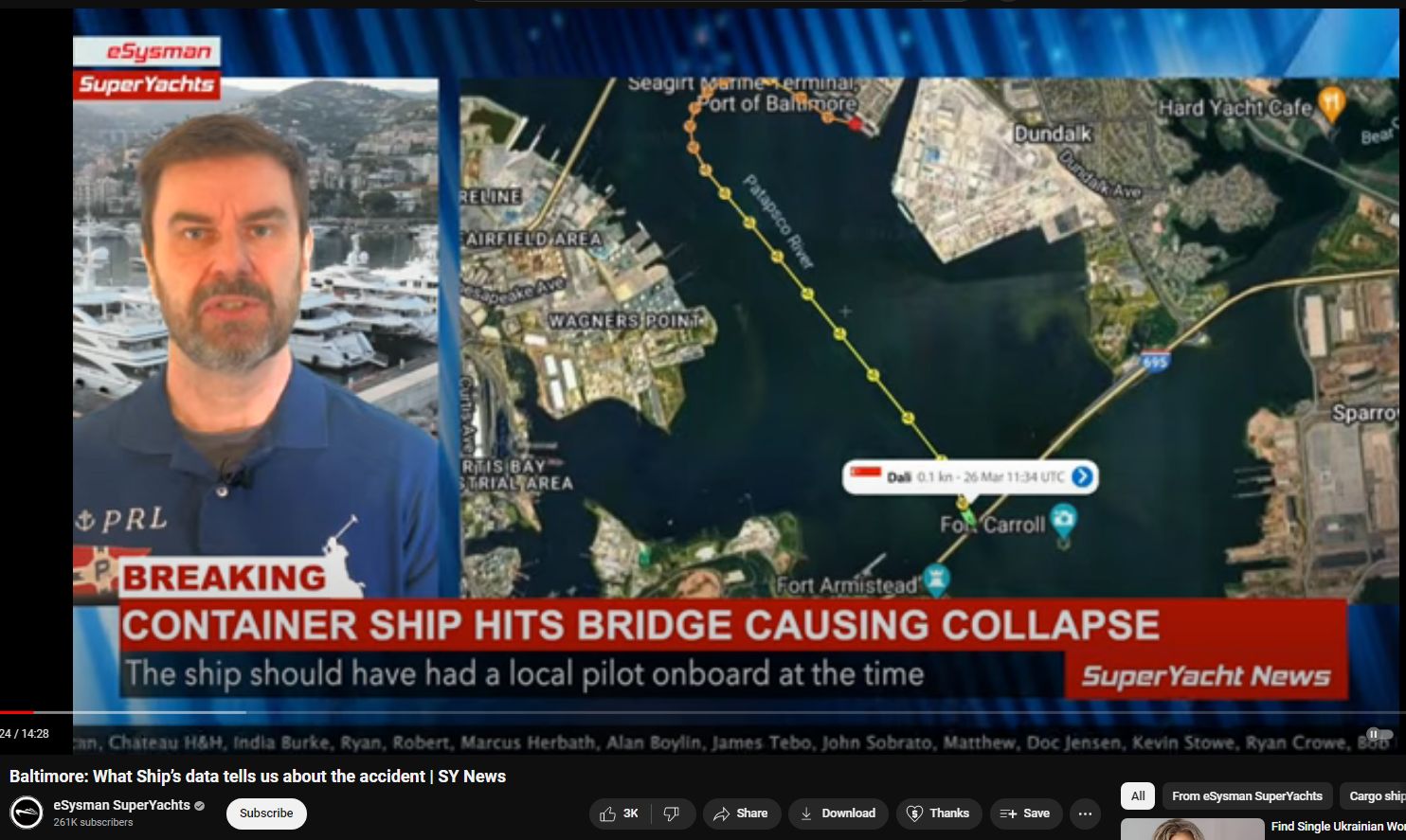
Two indie analyses appear to accept without question the 8.7 knot speed (and therefore plausible acceleration over distance) of such a massively heavy cargo ship, so I will defer on point (3). Note that the “6 miles” I estimated is barely 3 miles making the required acceleration that much more radical. (Sal Mercagliano / What is Going on With Shipping? youtube channel, and also eSysman Superyachts).
Sal Mercogliano / What is Going on With Shipping? youtube channel — https://www.youtube.com/watch?v=N39w6aQFKSQ
From comments: “the tunnels are too small – especially for trucks. This is actually so awful it’s going to ruin Baltimore shipping for years. They will drop from 13th to probably 28th now -with Hampton Roads picking up the load.”
“Baltimore Port worker tells ITV News that the Dali ship that crashed into the Francis Scott Key bridge experienced total power failures in the two days that it was docked before the crash: “It was having power problems with draining electrical popping circuit breakers and everything with the mechanics that were working on it,” Julie Mitchell, Co-Administrator from Container Royal said. Container Royal monitors the tonnage on all containers that come in and out of Baltimore Port” https://www.youtube.com/watch?v=N39w6aQFKSQ
” @greggs623 So I’m Longshoreman at the port of Baltimore and was working Dundalk a couple of hours before this happened, I was told by my union brothers that the ship lost power a couple times why we were discharging and loading the ship. They knew the ship had a power problem before it left port and still decided to set sail.” https://www.youtube.com/watch?v=N39w6aQFKSQ
===
Future prediction based on occult numerology — Only 8 people involved being reported at around 12 hours after incident….therefore, the occult numerology requiers one more to make 9. Will the captain off himself? A bum on roadway, body to be found sometime soon? Will one of the divers drown? One body will be found in one of the crushed containers? Just guessing, but there likely will be a 9th victim, to meet the occult numerology expectation.
“Again, we must take the word of the lying massmedia and gov — gov from gubere meaning to control, ment from meante meaning mind — government, literally mind control”
“WOW This looks like a movie”
Local news interviewed nearby resident who reported ‘it sounded like an earthquake’. ?? No camera footage of the impact exhibits any shaking or shuddering whatsoever, so …what earthquake?
(1) What (obviously) bent and warped and (possibly) melted the structural steel girders? Was this merely grinding, crushing, distorting massive force, or was another factor involved? Let’s not suddenly start re-believing the lying, controlled mass-media just yet.
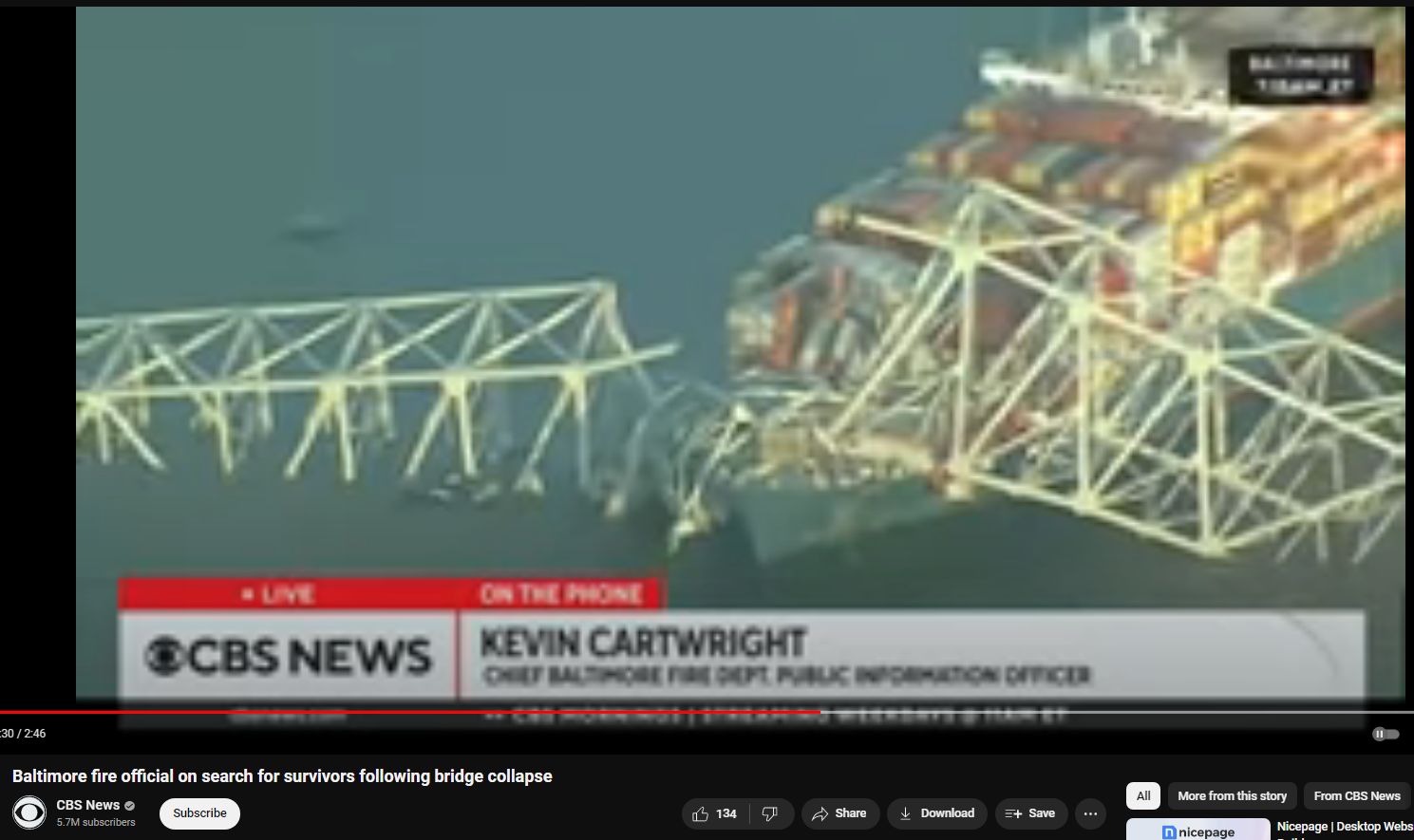
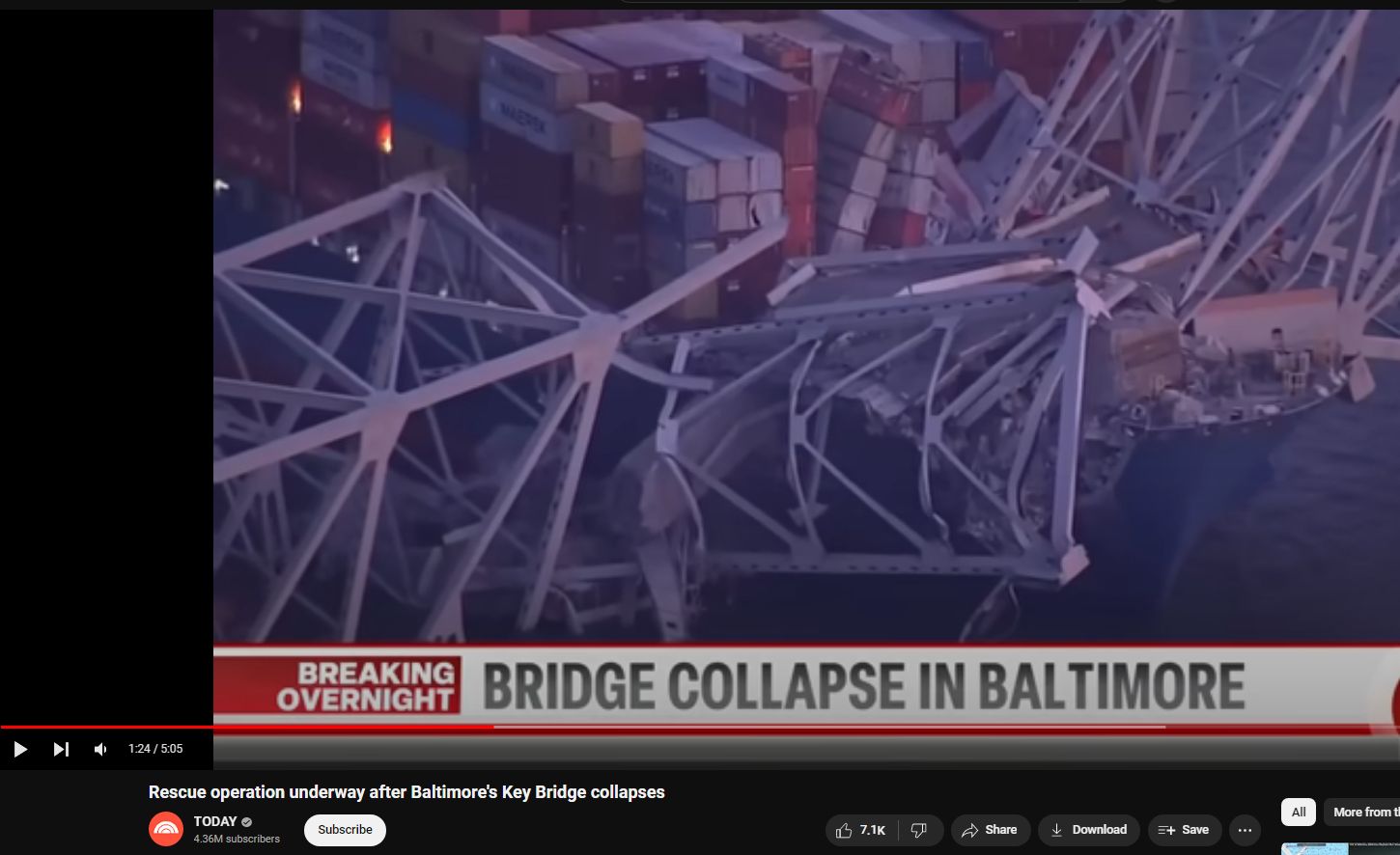
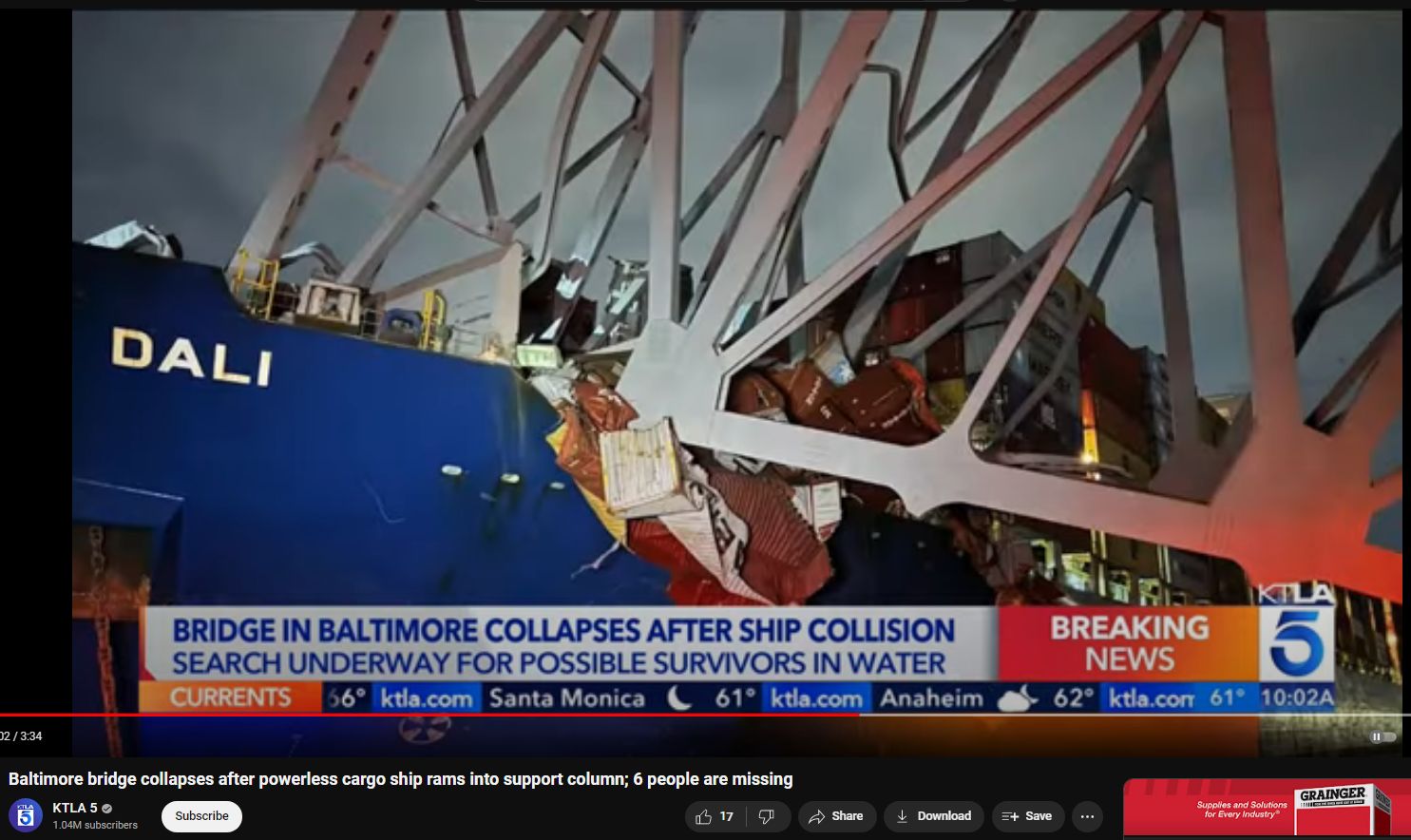
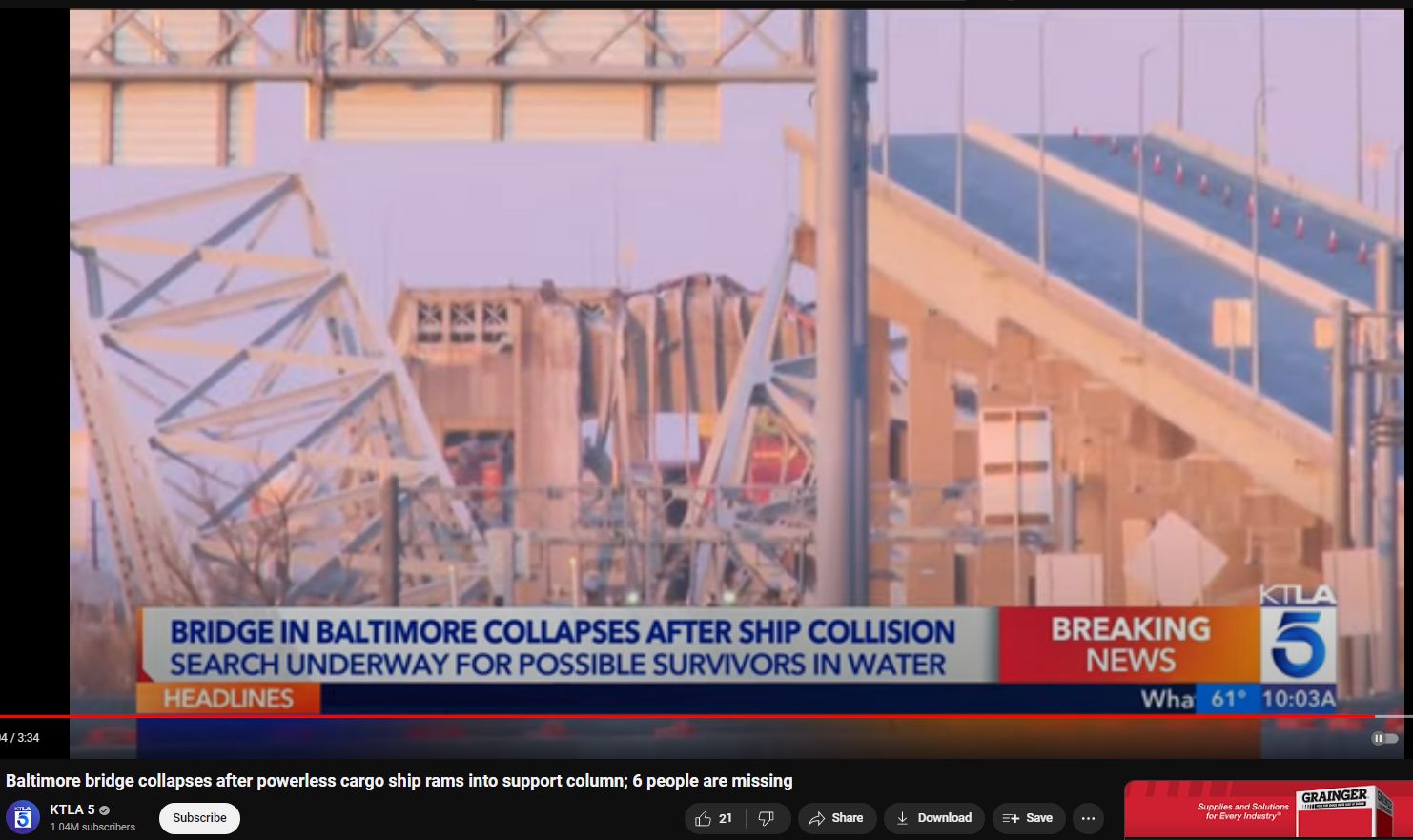
(2) What caused all ship power to instantly turn-off, then after a brief few moments back-on, and soon thereafter back off again, and then on during the actual impact with bridge pilings? No redundancies and all power going thru ‘one wire’, ‘one connector’, ‘one path’, ‘one point of failure’ ?? That would be absurdly wrong. So what possibly explains the totality off/on/off shown in video?
(3) How was the massive, heavy ship brought up to its (officially-reported) 8 knots (9pm) speed within only a few miles of acceleration distance (from the dock to the bridge)? What engine could possibly do that? (see math calc below) — see (14) about how the massive, heavy, inertial ship stopped-on-a-dime directly bow-over the bridge piling. LOL
(5) How was the ship pointed directly at the comparatively slim support? Or, if it wasn’t (as it indeed should not have been), how was the power-ailing ship guided to such an impact perfectly-aimed to cause maximum damage?
(6) How were so few cars on the bridge, which reportedly carries 35,000 vehicles daily? (Fewer potential fatalies = fewer angry families, questions, insurance claims, lawsuits)
News reports claim the captain notified Md Dept Transportation, which sounds like baloney — from video comments: “Ship would never alert md dept transport — and even if they did, why did md dept transport leave its road crew up there w/o evac warning?!? It’s baloney. First would be harbormaster, coast guard, md state police — in fact, in a panic, it would go out on vhf channel 16 and also via cellphone to 911.”
The span of time between Dali’s first lights-out under-power was not even two minutes before piling impact / bridge collapse. Someone is lying and/or omitting info.
Note – initial report to fire rescue was 13 persons in the water — source 1:40 into https://www.youtube.com/watch?v=qxtr4IaVdOA
(7) How was only one container ship in-motion in the busy and increasingly-busier (until now) ports of Baltimore? (Per Peggy Hall — is it normal for cargo ships to depart at 1am and at such speed?)
(8) Why was the container ship’s plotted course so hard-starboard, so near the bridge piling? Course is middle-of-channel, for least potential screw-up, unless other vessels seen or known approaching. All of this manuevering is done electronically.
From video comments: “since the ship was moving straight prior to loss of power (and also apparently straight during loss of power) I assumed the rudder was straight prior to (and during) loss of power, and that’s why it doesn’t make sense to me that it changed course (and only after it regained power). are you saying that it will change course even if the rudder is straight?” https://www.youtube.com/watch?v=N39w6aQFKSQ
(10) Will the cleanup be used as excuse to annihilate the historically-important island called Fort Carroll?
(11) Bow and both sides of the Deck surface of container ship all lean massively over the ship’s hull; however, video of collision shows the impact beginning at the water-level. How is it possible the leading edges of the bow did not impact the bridge superstructure before the hull impacted the submerged support pilings? An examination of the un-struck piling shows no large/wide rock-fortified “island” that otherwise might explain the water-level-first impact / splash. The impact should have occured first at the ship’s deck-level, higher up along the bridge’s support structure. Also, at least one video has been seen heavily edited, to remove the water-level-first wave-impact.
See the overhanging “proud bow” of similar container ship creating zero water-level splash even while alliding with the dock — https://www.youtube.com/watch?v=YDOMhCCpTnQ
This lack of splash reinforces the question — at Baltimore Key Bridge, with DALI’s similar overhanging proud bow, what exactly caused the massive “splash” (or, possibly, instantaneous pulverization / dustification witnessed on the perfectly-lit, perfectly-framed, perfectly-timed “Zapruder 2.0” video as appearing at the water-line?
Curiously, aftermath video shows the entire reinforced concrete piling is largely powderized; even more curiously is the extreme right-angle bending of nearly all rebar reinforcements that had been encased within the concrete piling. The underhanging bow keep was not involved, it did not collide with the bridge’s pillar. Is this not evidence of some additional energy having been involved in the pulverization / dustification of the bridge piling?
In fact the image below shows the entire southern piling was pulverized / dustified. What exactly impacted this, so far beyond the edge of the ship, to cause such profound damage?
Also, what melted the steel girders draped and hanging like wet spaghetti noodles over top of the second, northern bridge piling? (And the melted steel girders also appearing around the northern piling whose only force was the see-saw whiplash effect?) Why is this material being removed first by the ‘large crane’, versus clearing the economically far more important shipping channel closest to the southern piling?
Note below the “melted” structural steel girders. The “melting” only appears at the girders located near the two main pilings. No other melted / wilted / strangely-impossibly-bent-without-craking-steel-or-peeling-paint girders appear in any of the other debris.
Also, the large crane was photographed / video’d immediately south of the Chesapeake Bay Bridge less than 24 hours after the Key Bridge catastrophe, indicating pre-knowledge, pre-planning, pre-marshalling of recovery resources (i.e., the crane), or else more amazing coincidunce.
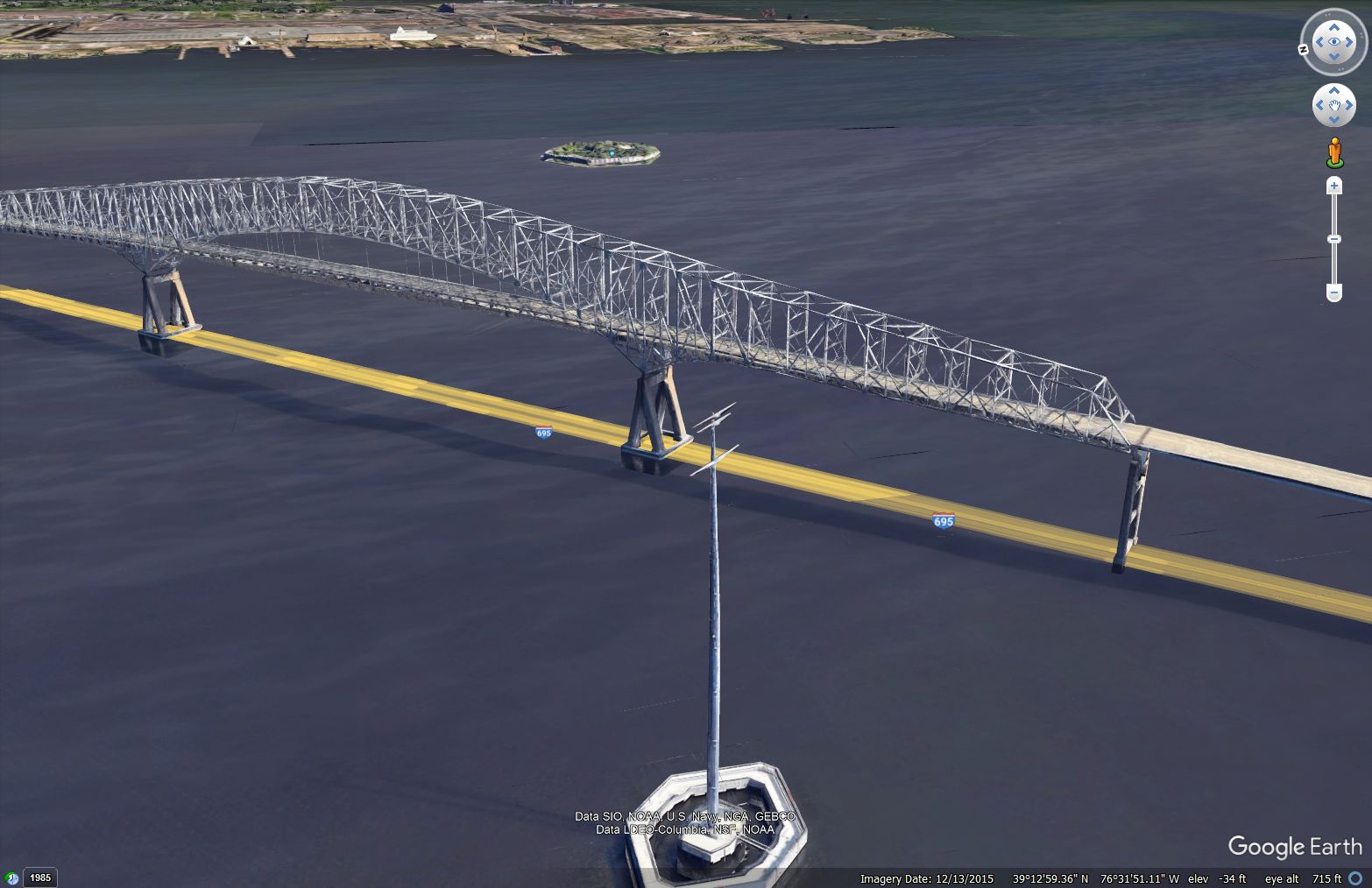
(12) At such close location to land and bridge structures, 8 knots speed for a kilo-ton cargo ship is absurd and surely criminally negligent.
(13) Waves / wake from 8 knots speed would be massive. None are visible in any videos.
(14) So this massive heavy ship pushes over the bridge which folds up like playing cards, and then the ship just stops-on-a-dime, dead-in-the-water, barely having past its bow over the bridge piling?! Comically absurd! At the very least it would have continued in straight-line right on down the channel, particularly given its supposed ‘loss of power’ steering, etc. If it did somehow, impossibly, become lodged on the bridge piling, its massive inertial force would have swept its stern crossways in a form of “spinout”. The abrupt stop is another tell-tale of someone lying not giving all facts.
The more that I look, the more anomalies and impossibilities that I see.
Is this another aspect of the Black Swan Flock calamity?
Ports of Baltimore closed. Supply chain destruction. Hazardous and oversized cargo are not permitted through the harbor tunnels.
Being reporting on WTOP news not even 12 hours after the event:
Replacement bridge — $5 billion, 5 years
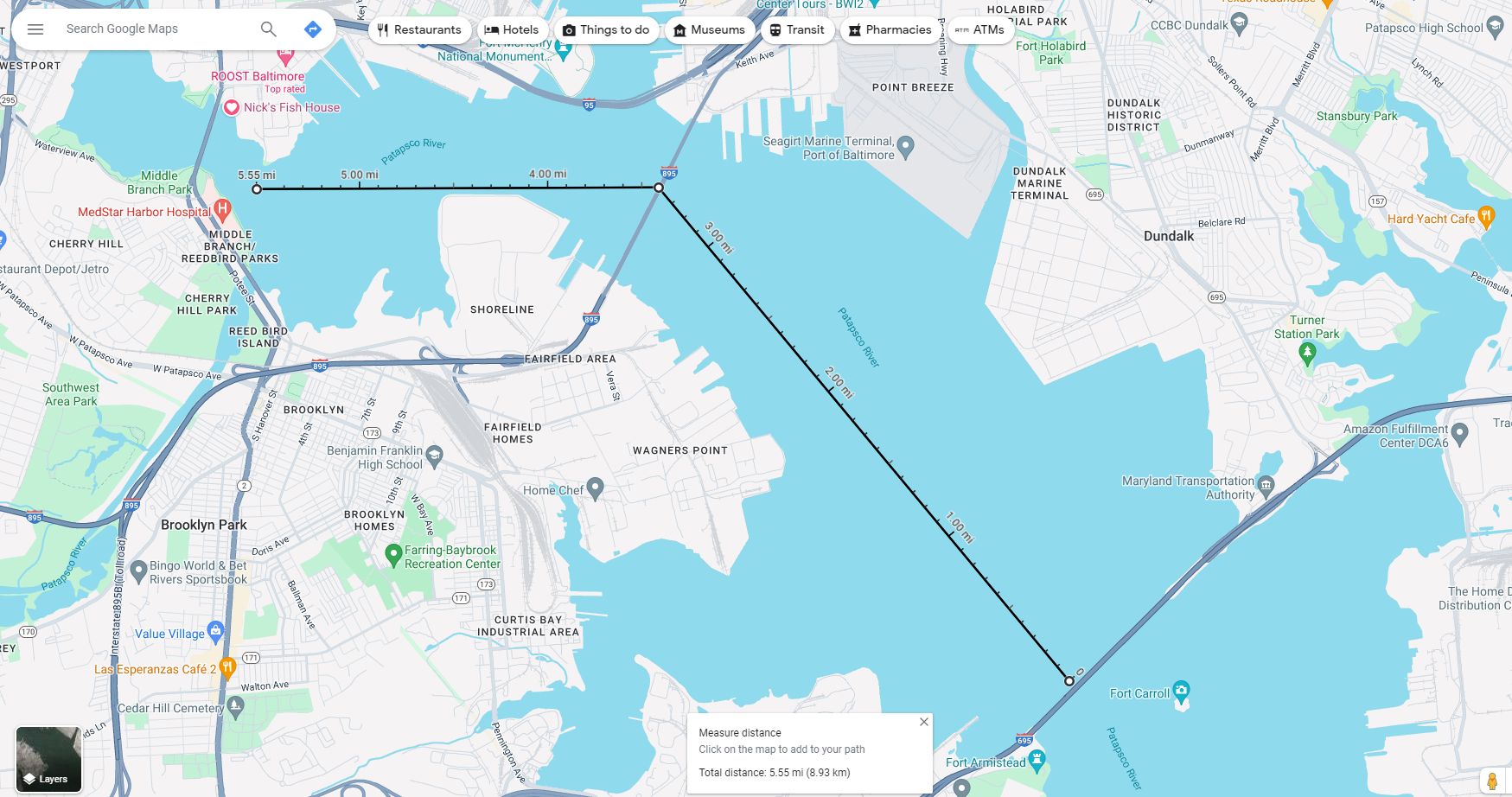
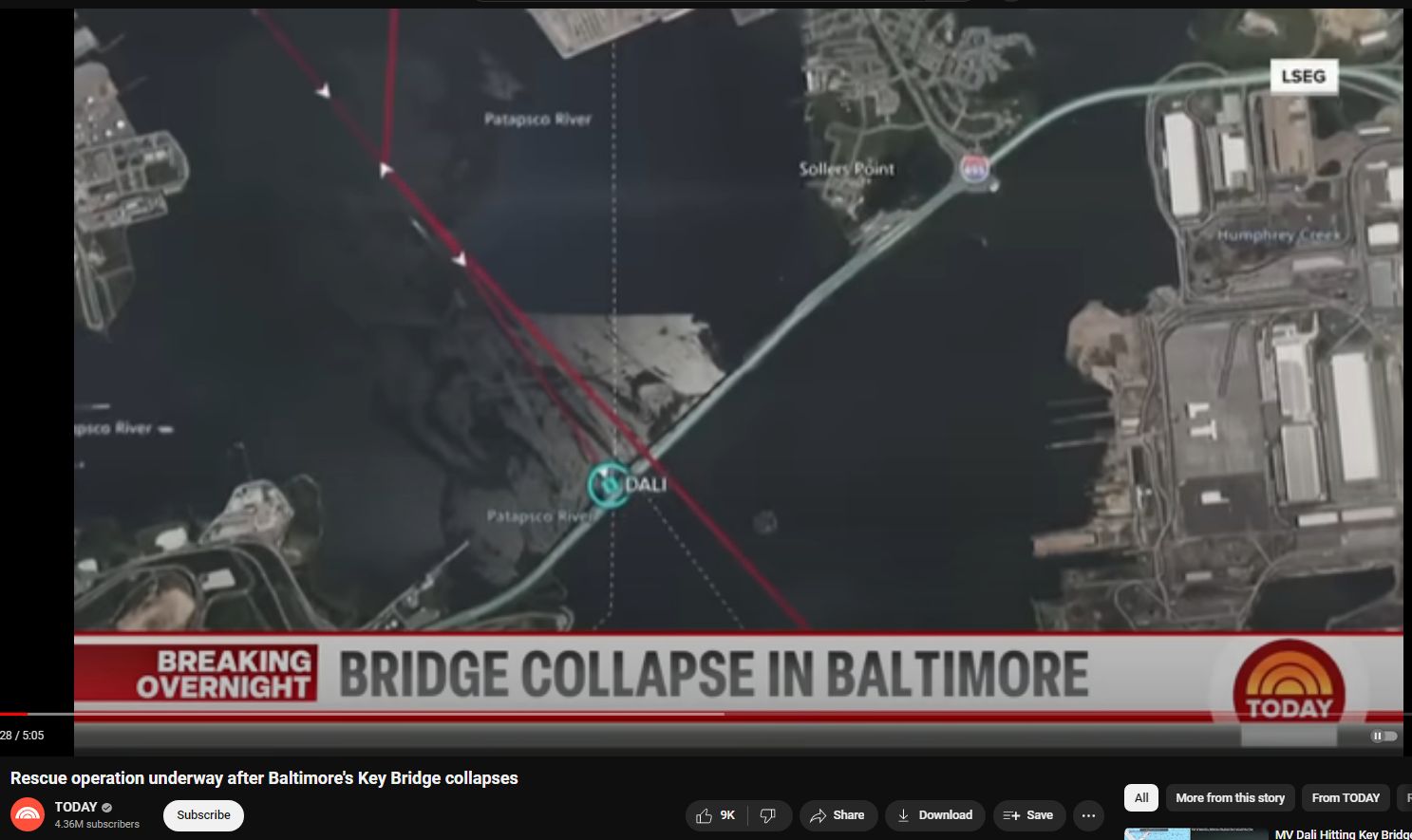
===
From comments: “ @JackBlpck427 Currently the US is involved in a conflict where both sides target bridges.” on https://www.youtube.com/watch?v=4Sunm6VtHRo
===
The Francis Scott Key Bridge, located in Baltimore, Maryland, is a significant structure that plays a crucial role in the supply chain shipping industry. Here are the details of the bridge and its importance to supply chain shipping:
### 1. Location and Design
The Francis Scott Key Bridge spans across the Patapsco River, connecting the communities of Baltimore City and Anne Arundel County. It is a steel through-arch bridge with a main span of 1,200 feet and a total length of approximately 4.4 miles, including approach spans. The bridge’s vertical clearance of 185 feet above the water allows large vessels to pass underneath without obstruction.
### 2. Importance to Shipping
1. **Gateway to Ports:** The Francis Scott Key Bridge serves as a critical gateway to the Port of Baltimore, one of the busiest ports on the East Coast of the United States. It provides direct access for cargo ships, container vessels, and bulk carriers entering and exiting the port, facilitating the movement of goods and commodities in the supply chain.
2. **Connection to Transportation Networks:** The bridge is an essential link in the region’s transportation infrastructure, connecting maritime shipping activities at the port with major highways, including Interstate 695 (Baltimore Beltway) and Interstate 95. This connectivity enables seamless transportation of goods between the port, distribution centers, manufacturing facilities, and markets across the country.
3. **Support for Trade and Commerce:** By accommodating large vessels and heavy cargo traffic, the Francis Scott Key Bridge supports international trade and commerce. It allows for the efficient import and export of goods, raw materials, and products, contributing to economic growth, job creation, and competitiveness in global markets.
4. **Logistical Efficiency:** The bridge’s strategic location and design contribute to logistical efficiency in supply chain operations. It helps streamline the movement of containerized cargo, bulk commodities such as petroleum products and grain, and specialized shipments, enhancing the overall flow of goods through the port and distribution networks.
5. **Reliability and Safety:** Ensuring the structural integrity and operational reliability of the Francis Scott Key Bridge is paramount to the safety and security of maritime and land-based transportation activities. Regular inspections, maintenance, and modernization efforts are undertaken to uphold safety standards and minimize disruptions to supply chain operations.
### Conclusion
The Francis Scott Key Bridge stands as a vital infrastructure asset that facilitates supply chain shipping, trade, and economic activity in the Baltimore region and beyond. Its strategic location, connectivity to transportation networks, and support for maritime commerce underscore its importance as a key component of the maritime supply chain and logistics ecosystem.
===
more misc comments:
“The kinetic energy of a fully loaded 900ft container ship traveling at 8knots, is around 2.5 times the kinetic energy of an Airbus a320 flying at cruising speed. That’s a lot of energy!”
— “Yeah, it’s no wonder the bridge didn’t evaporate into dust, all structural steel dustified; equally miraculous that the plane, er, ship, didn’t get swallowed up by that wet water, leaving no trace, kinda like flight 93. Good thing Baltimore ain’t no NYC nor Shanksville !!”
“I think escort tugs past critical structures like bridges should have been the standard for any ship that can take out a pier like that. ”
“These are the accidents that create those standards. Unfortunately safety regulations are written in blood.”
“No way this monster got up to 8 knots un in under 6 miles from dock. Someone is lying somewhere, omitting info.”
===
As of my last update in January 2022, the Port of Baltimore handles a diverse range of import and export products. However, one of the major import products at the Port of Baltimore is automobiles and light trucks. The port is a major gateway for importing vehicles, including cars, trucks, and other motor vehicles, from manufacturers around the world.
Additionally, the Port of Baltimore handles a significant volume of containerized cargo, including commodities such as machinery, electronics, appliances, chemicals, food products, and consumer goods. The port’s strategic location, excellent transportation infrastructure, and efficient handling facilities make it a preferred choice for various importers and exporters.
It’s important to note that import trends can evolve over time based on market demand, economic factors, and global trade dynamics. Therefore, for the most up-to-date information on the major import products at the Port of Baltimore, it is recommended to consult official port statistics and reports or industry sources.
===
Compare the strangely edited footage — with the wave-first impact removed and the port lights greatly enhanced (gamma boost of entire video frame) —
original on KTLA showing impossible wave-first impact — https://www.youtube.com/watch?v=H3UYNj_8R78
edited showing little to no wave at all and almost no impact — https://www.youtube.com/watch?v=dkb2cqToCH0
(note that the second video has already been taken down)
Interesting to see in KTLA video the DALI anchor chain dropping nearly straight-down, as if dropped after ship halted; versus what would be expected: the anchor chain pulled taughtly at steep angle toward the stern, as it had reportedly been dropped before and dragged along at high-speed / 8 knots:
===
2024-0402
https://www.youtube.com/watch?v=6ifuKSO–1M
8:00 in
40 years prior, another container ship, which also lost power, hit the same pillar.
===
This allision (mariter-speak for collision of moving object with stationary object) shows a briskly-moving ship barely scratch paint or concrete —
https://www.youtube.com/watch?v=JJPxXA7mELE
===
2024-0401 — Like an April Fools joke, US Army Col. Estee S Pinchasin invoked the 911 catchphrase at 0:45 into this video https://www.youtube.com/watch?v=WP1aLgvDo4Q — “What we’re seeing in the water is that the wreckage has been completely collapsed; some people use the word ‘pancaked’.” What actually happened is that the Directed Energy Weapons “dustified” and wilted the steel — The Army event handler is merely pre-planting terminology and false explanation for the coming necessary cover-up. This is exactly like Dr Judy Wood’ “Where Did The Towers Go” all over again. Expect the same lies, deceptions, words, phrases, mind-games.
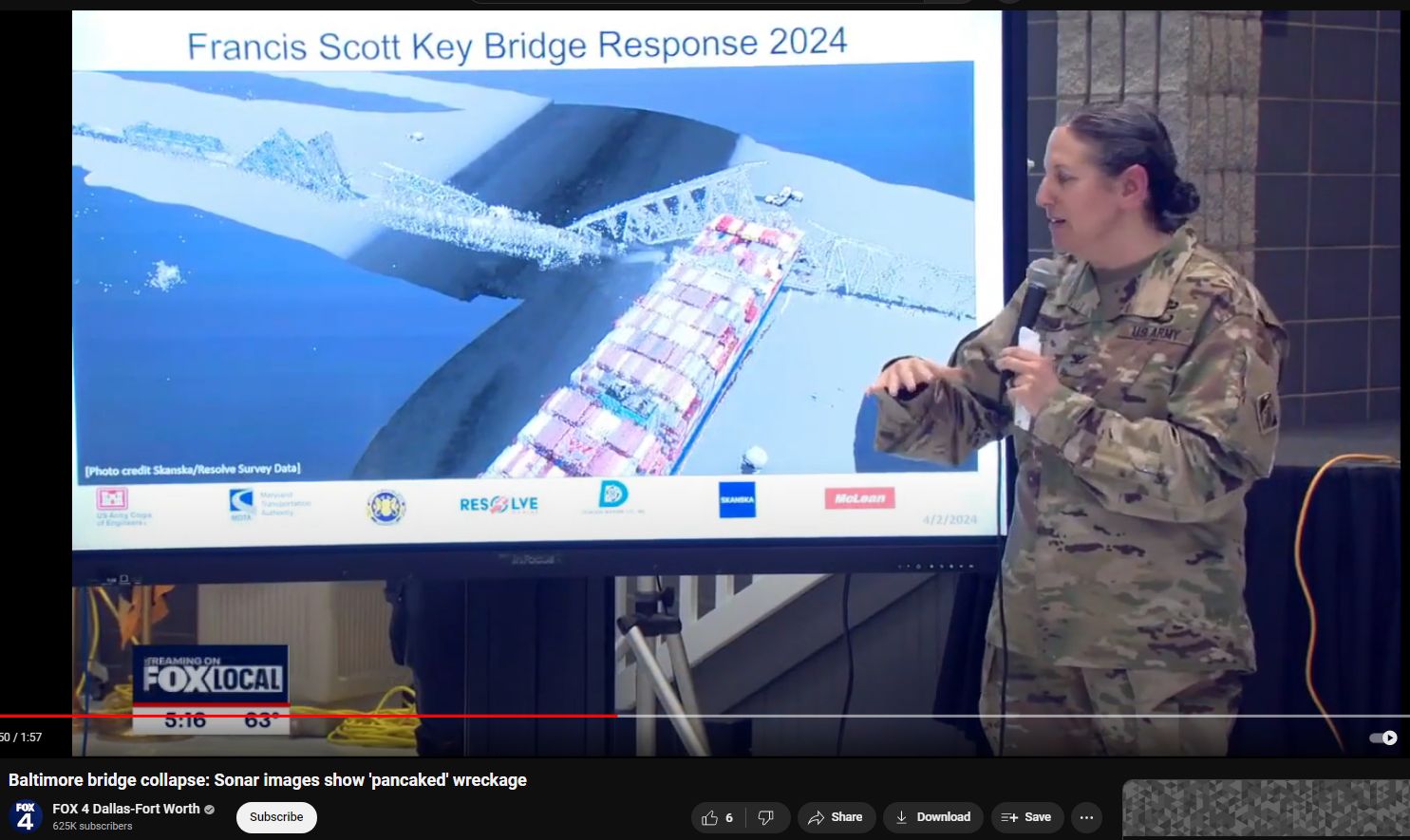
Also equally odd is the mystery rubble present atop the submerged bridge wreckage —https://www.youtube.com/watch?v=WP1aLgvDo4Q
Who is Pinchasin?
PDF Colonel Estee S. Pinchasin _ Baltimore District _ Bio Article View
===
Occult Numerology analysis
“Hazmat investigator identified 56 containers of hazardous materials, NTSB chief says” — there’s the “11”
$60 million
6 dead
need another 6…
6 weeks until partial channel reopen?
6 months to full channel reopen?
===
Other weirdness:
“Conspiracy theories” exist and persist viciously because the officials and authorities relied upon to tell the truth very rarely do so punctually and far less so entirely.
This is bizarre as Hell, too, given that THE WIRE season 2 episode 1 actually has a boat that “loses electrical power” with “engines out” goes adrift “in the shipping channel” LOL —
“David Simon, the creator of the HBO series “The Wire” and a famed Baltimore native, began fact-checking some of the more ludicrous false claims as they circulated on X on Tuesday.” — under the heading “Jewish space lasers” on this CNN page https://www.cnn.com/2024/03/28/politics/baltimore-bridge-collapse-conspiracy-theories/index.html
===
“Most large construction projects break ground with a ceremonial shovel jabbed into loose soil. To kick off the Key Crossing Reliability Initiative, BGE drove a steel pile into 100 feet of soft mud beneath the Patapsco River.”It’s a fitting start to construction of such a significant infrastructure project.
“Underwater transmission cables in this shipping thoroughfare to the Port of Baltimore are nearing the end of their useful life. Multiple studies on replacing this “Key Crossing” segment, which was installed in the 1970s, determined that running new power lines high above the water would have a fraction of the environmental impact on the Patapsco River and its wildlife and be far less disruptive to port operations. Plus, overhead replacement would be half the cost of the underwater alternative, reducing the impact to electricity bills. It would also support more local jobs.
“What followed was extensive planning, permitting, and outreach to key stakeholders—including environmental groups, elected officials, government agencies, and community leaders. The BGE project team received all necessary federal, state, and local permits prior to construction, and incorporated stakeholder feedback into the final design wherever possible.
“Key Crossing construction began in early June 2020 and is expected to be completed in two years. Glen Burnie-based McLean Contracting is leading this initial stage from two massive crane barges. Their task: drive 120 steel piles deep into the Patapsco riverbed. The piles will be grouped into five clusters, which will each support a concrete foundation for one of the five new transmission towers for high-voltage wires strung across this two-mile wide river parallel with the Francis Scott Key Bridge.
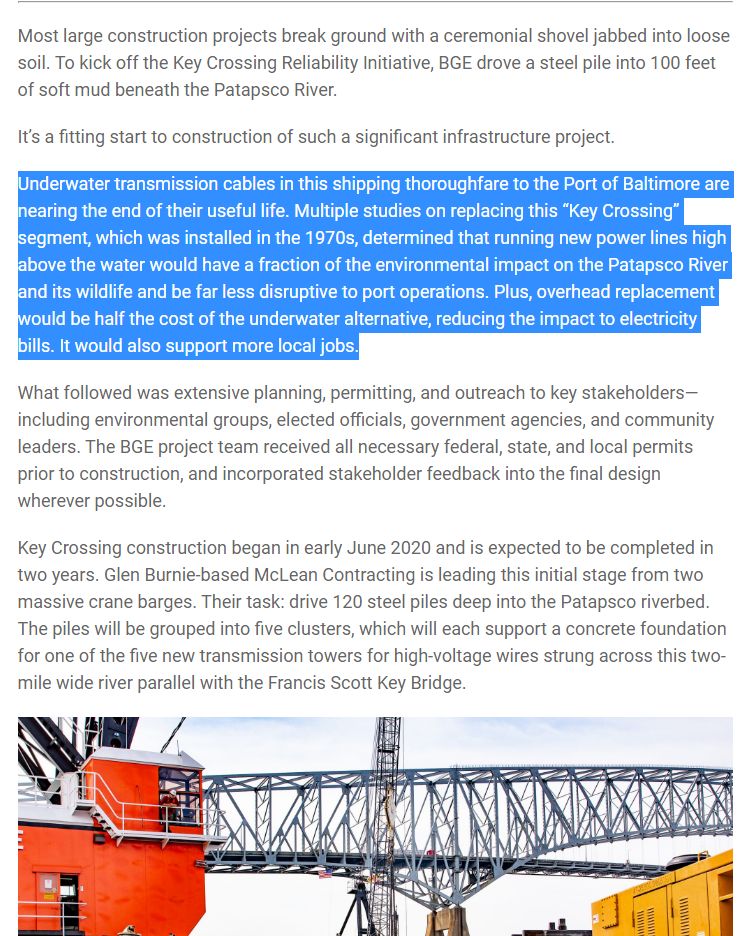
PDF — Construction begins on BGE’s Key Crossing transmission reliability project – BGE Now
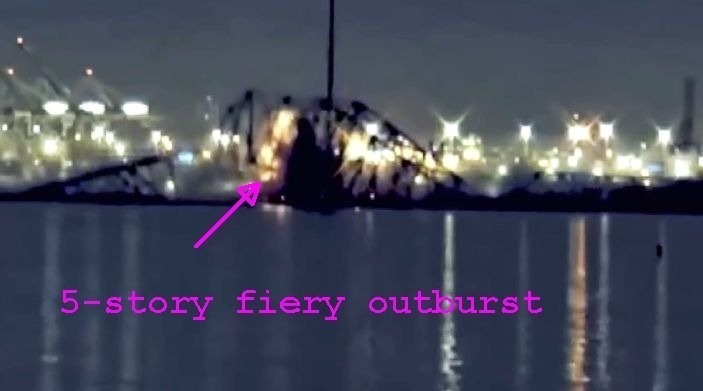

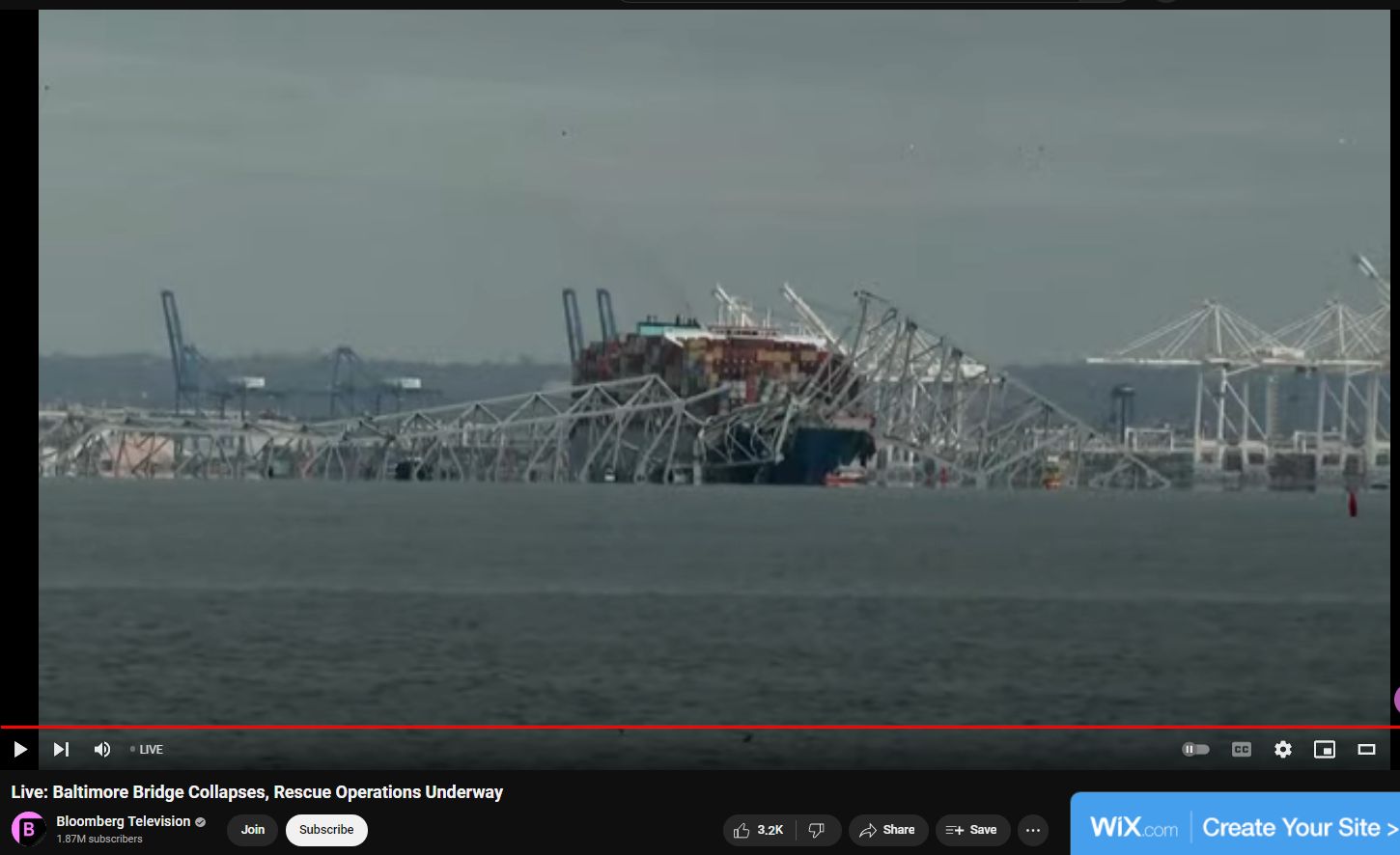
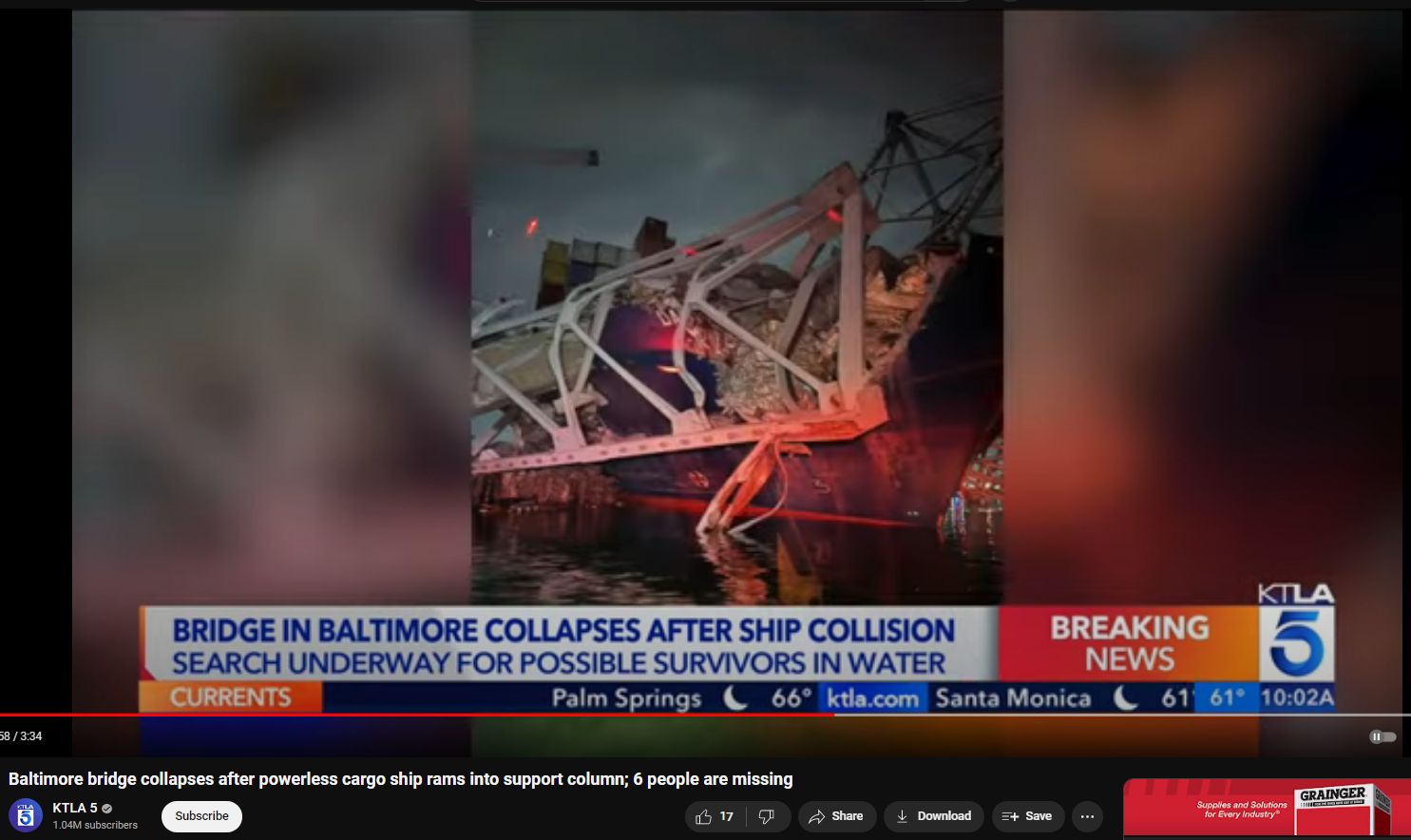
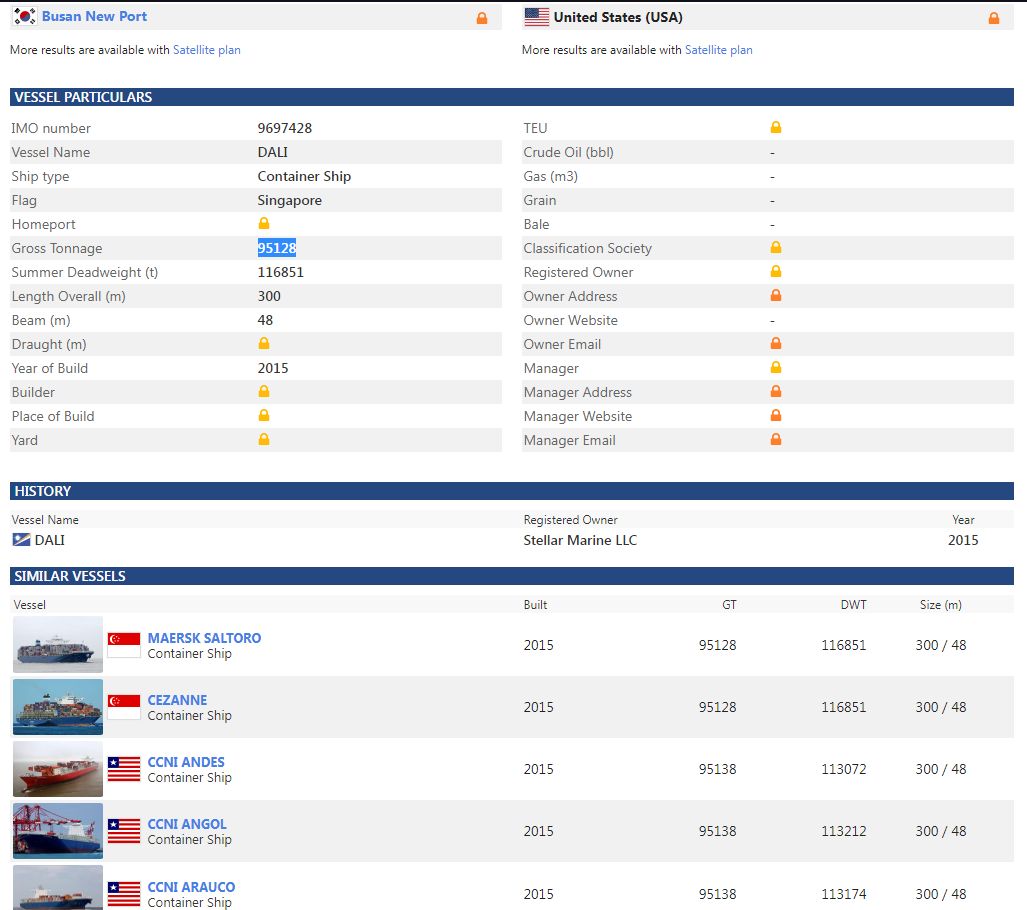
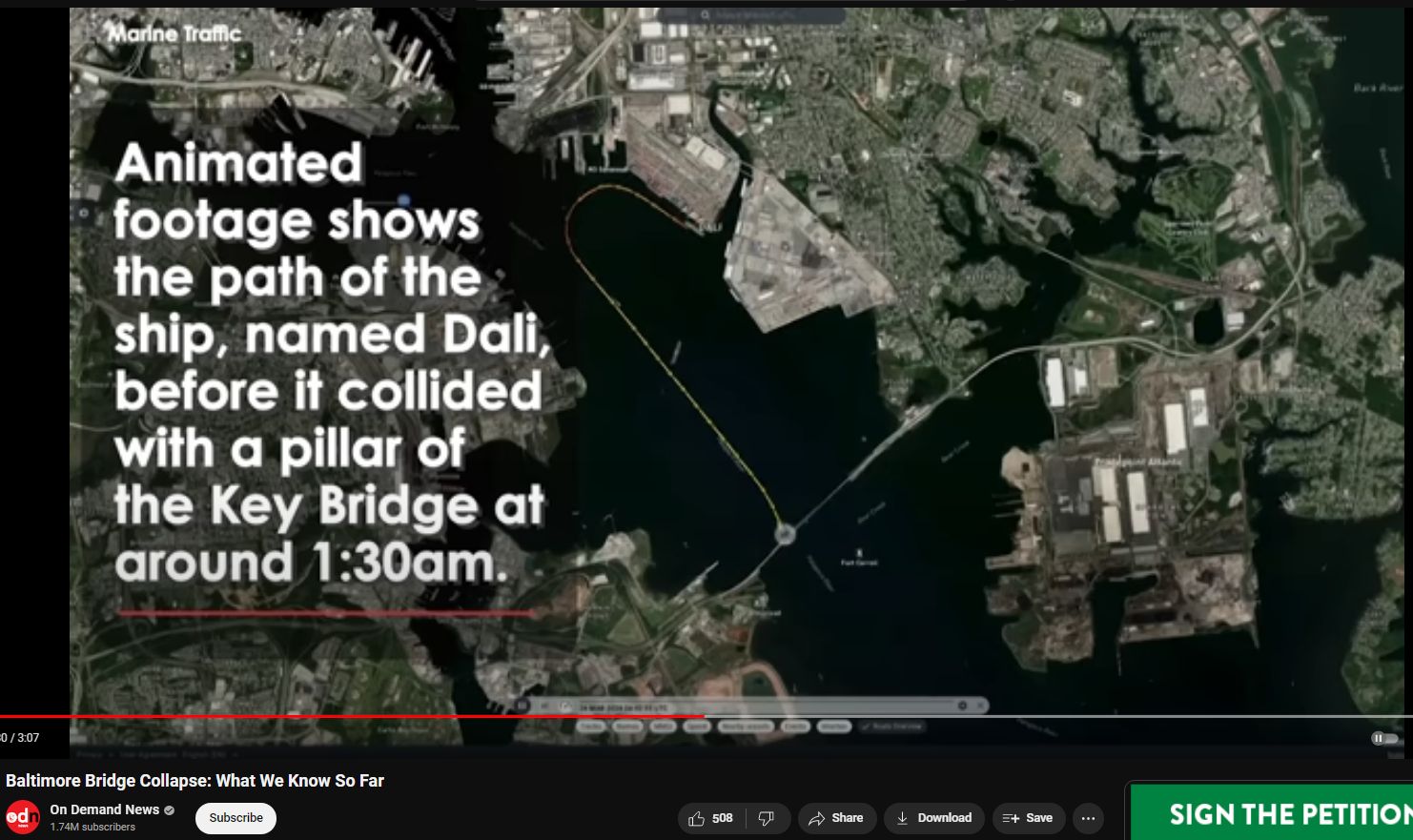
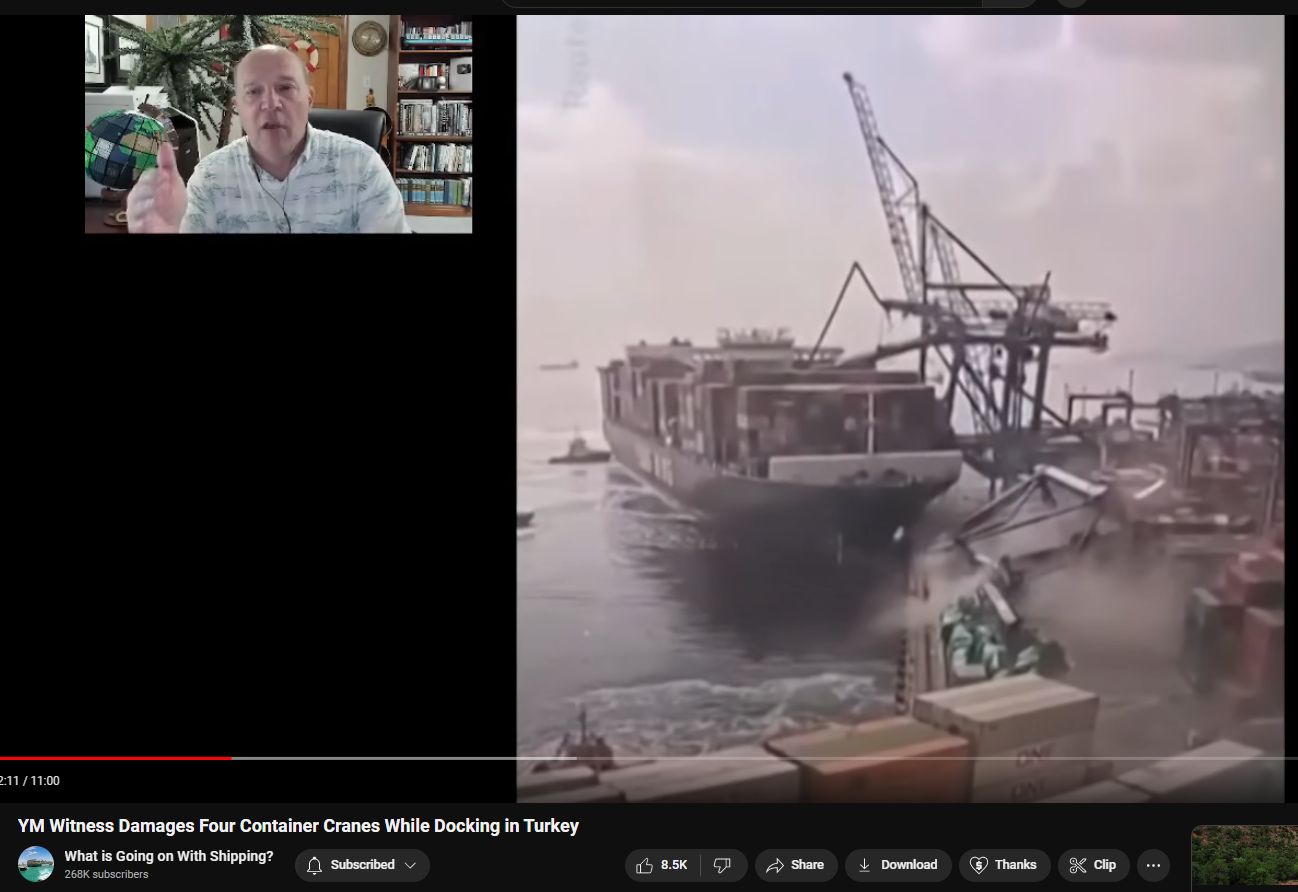
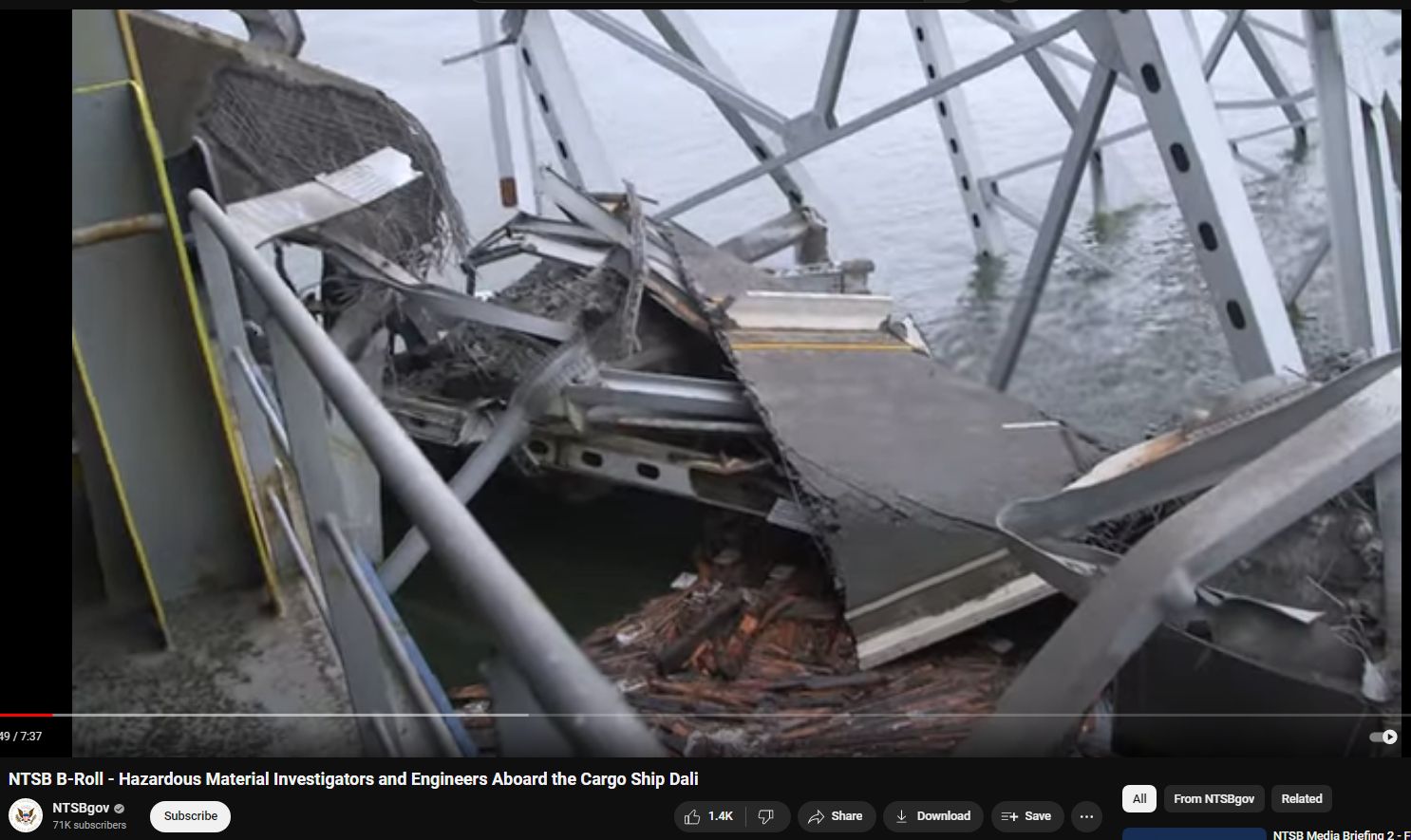
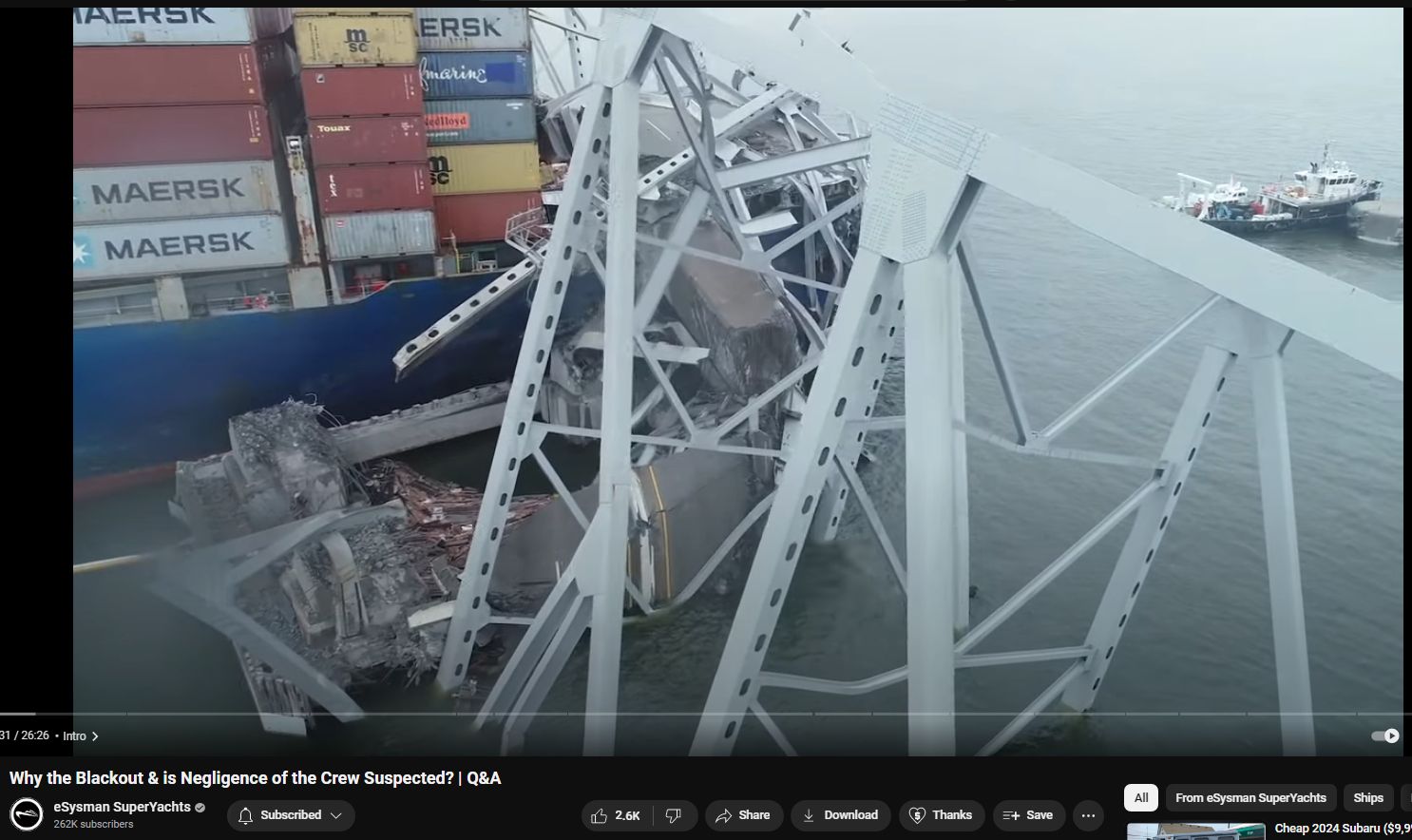
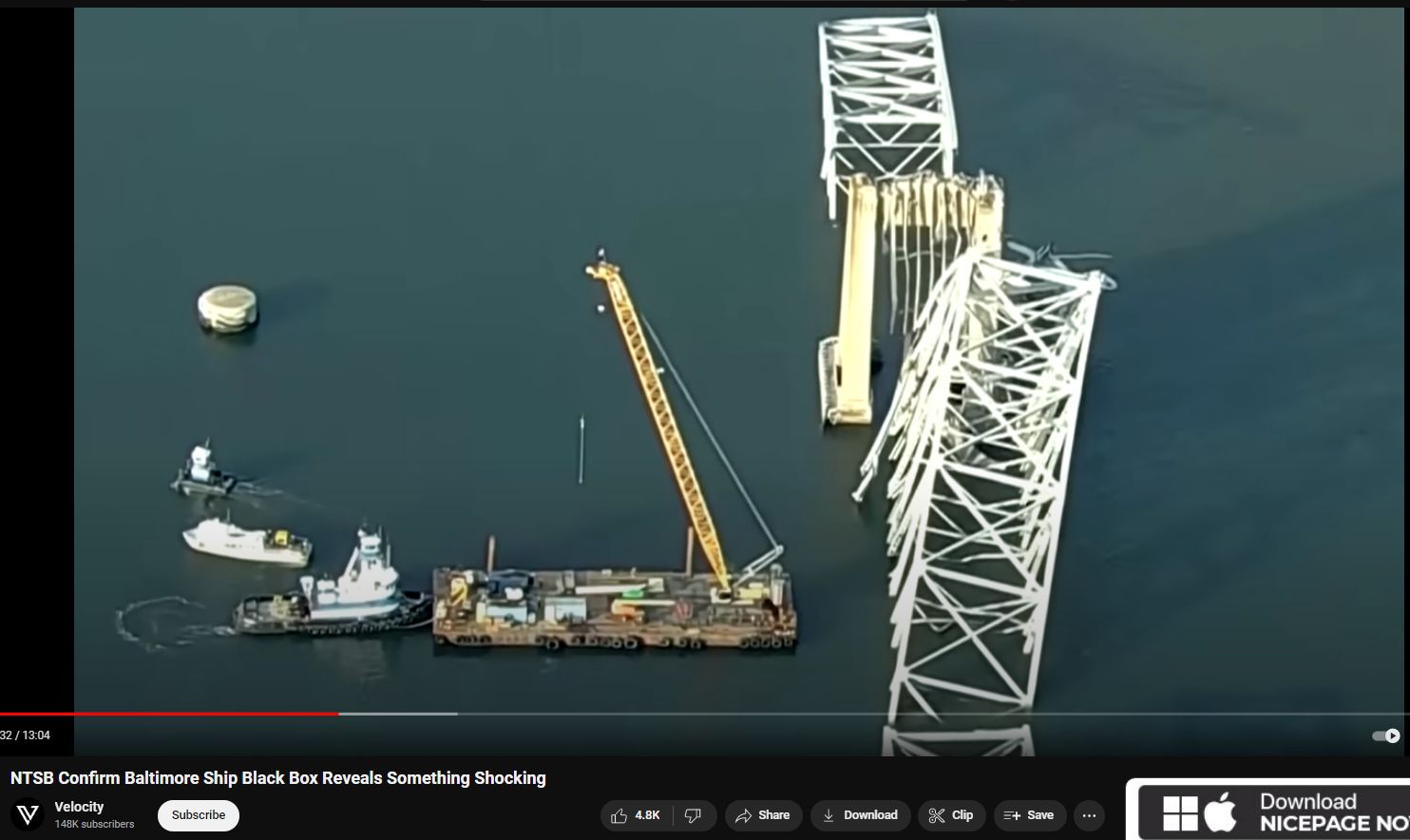
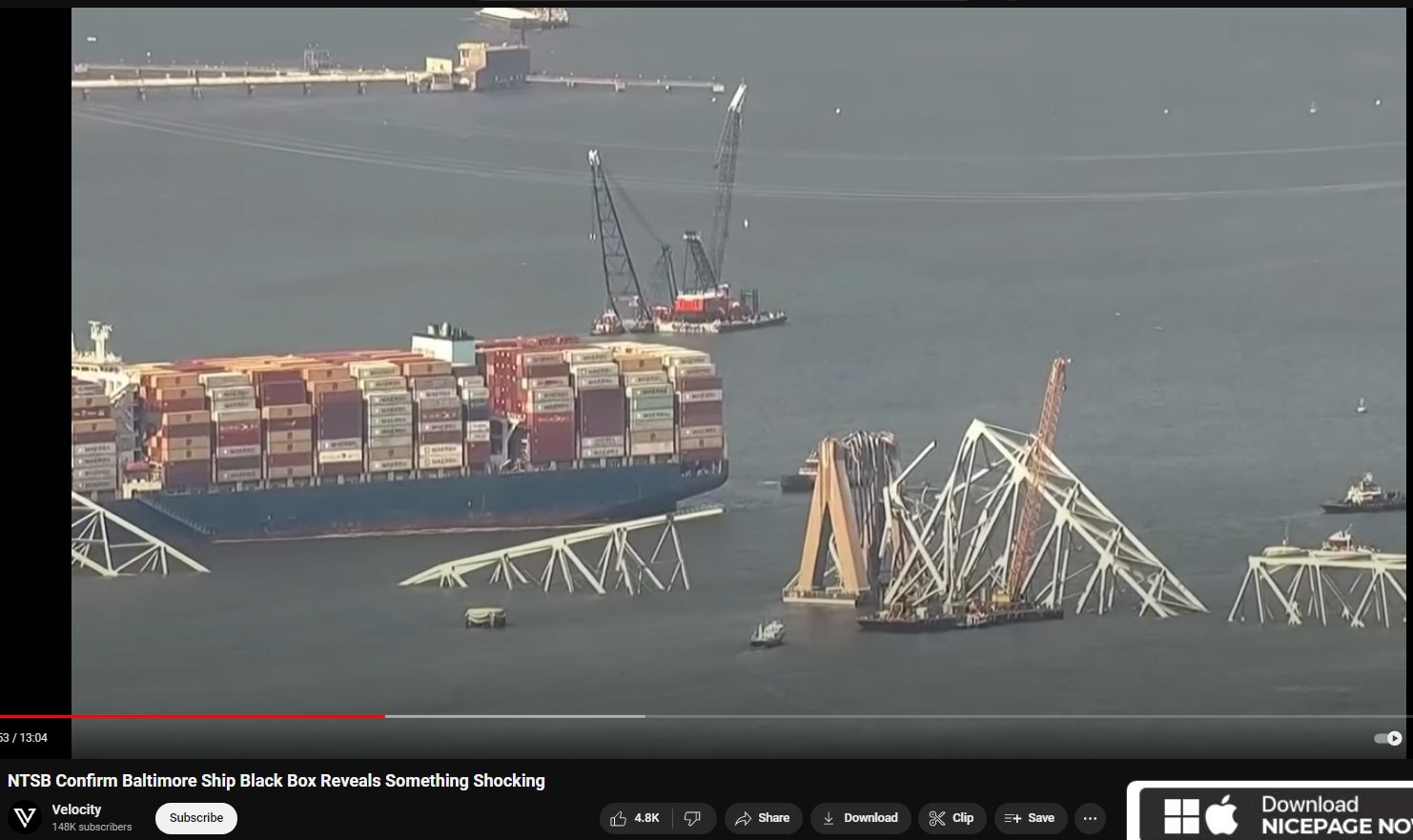
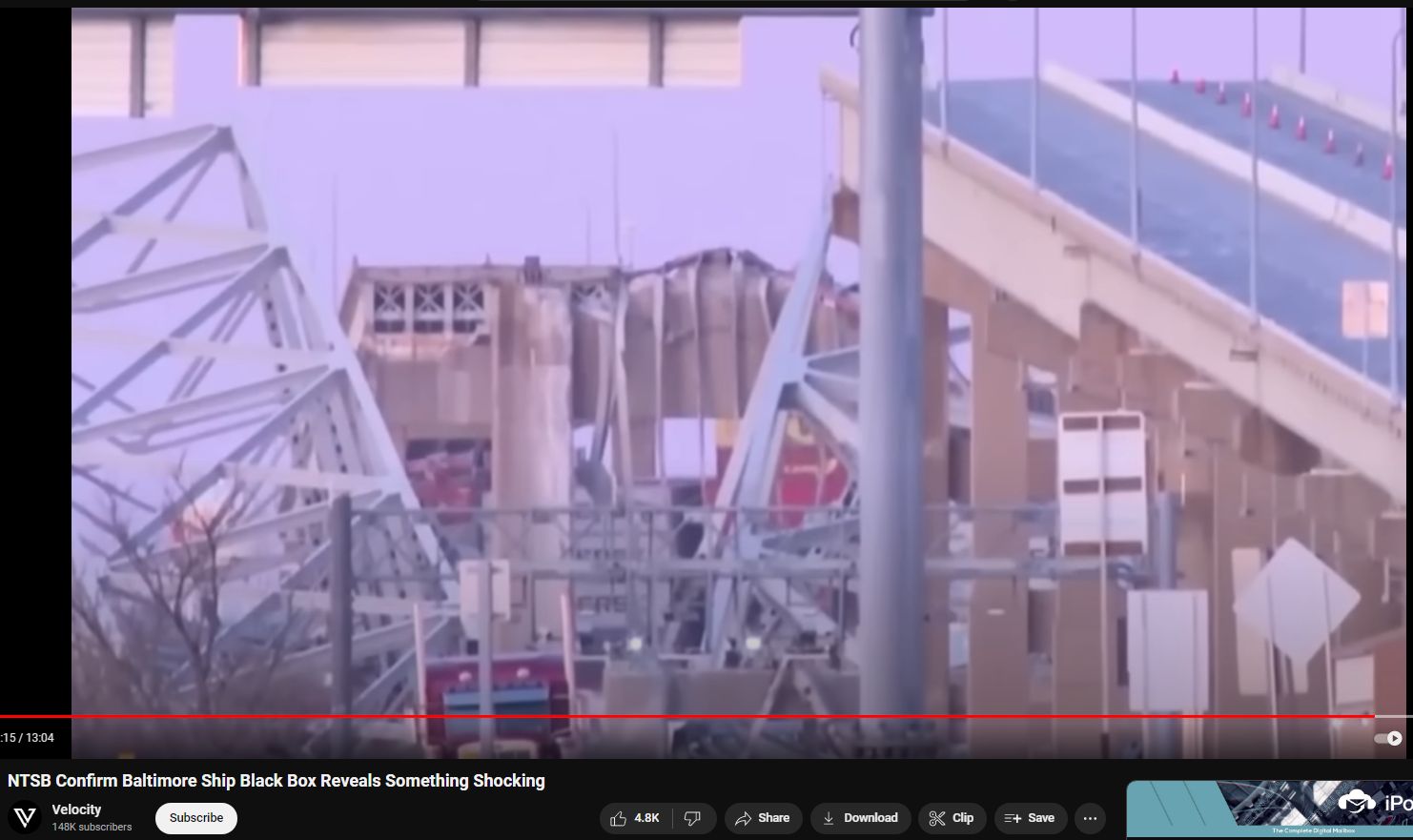
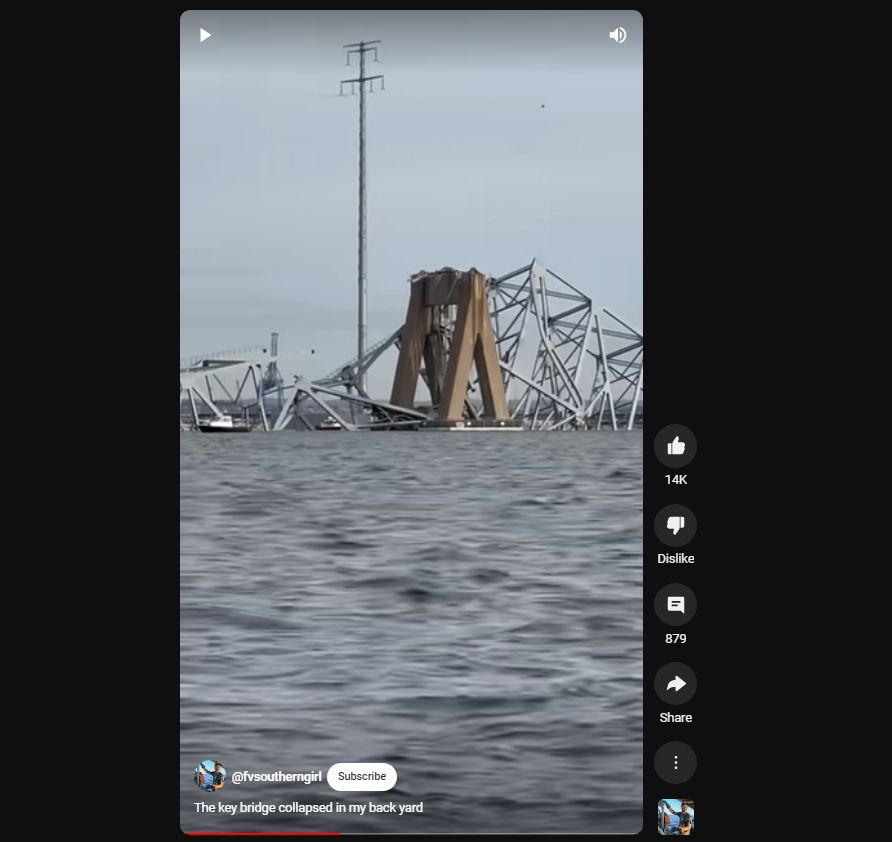
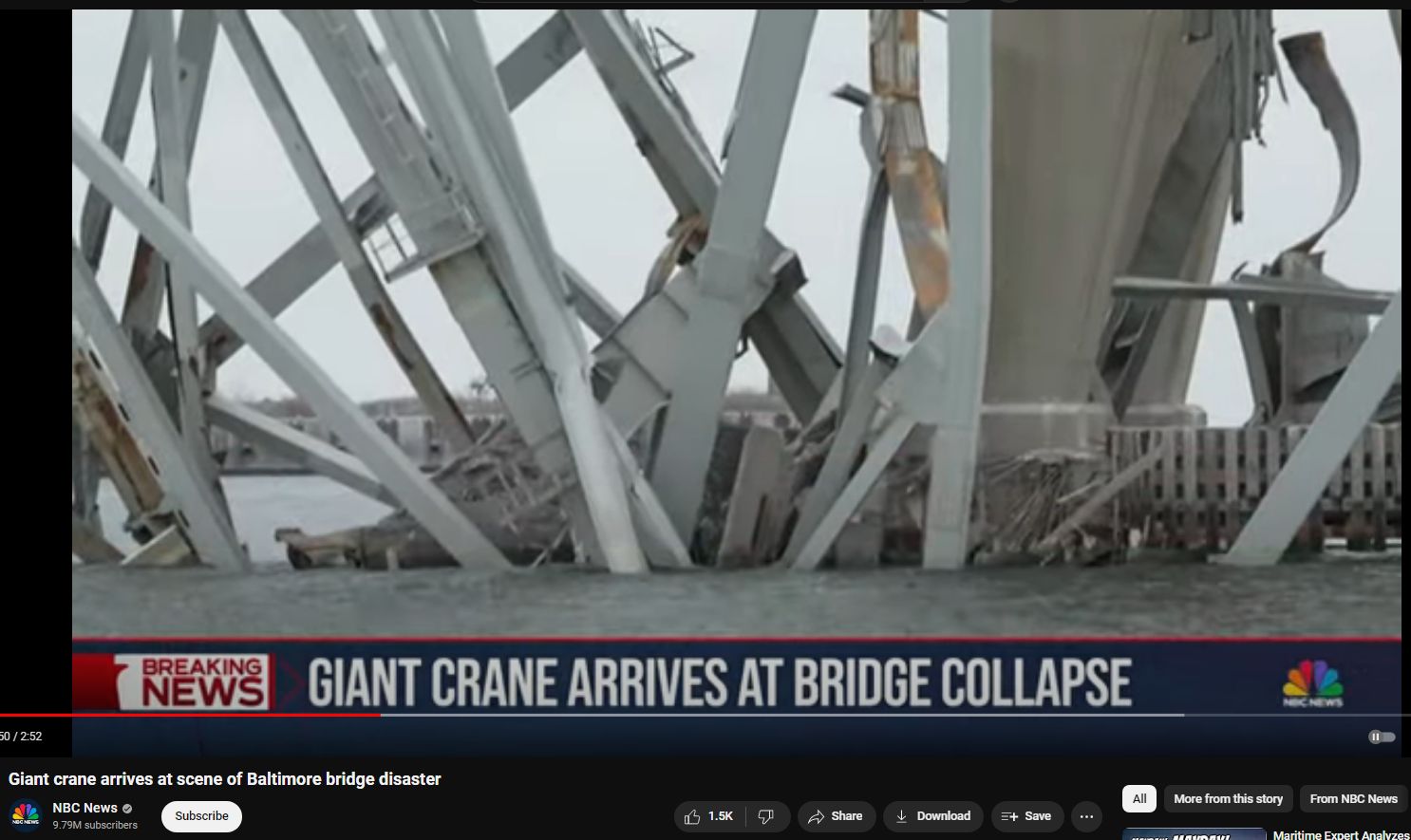
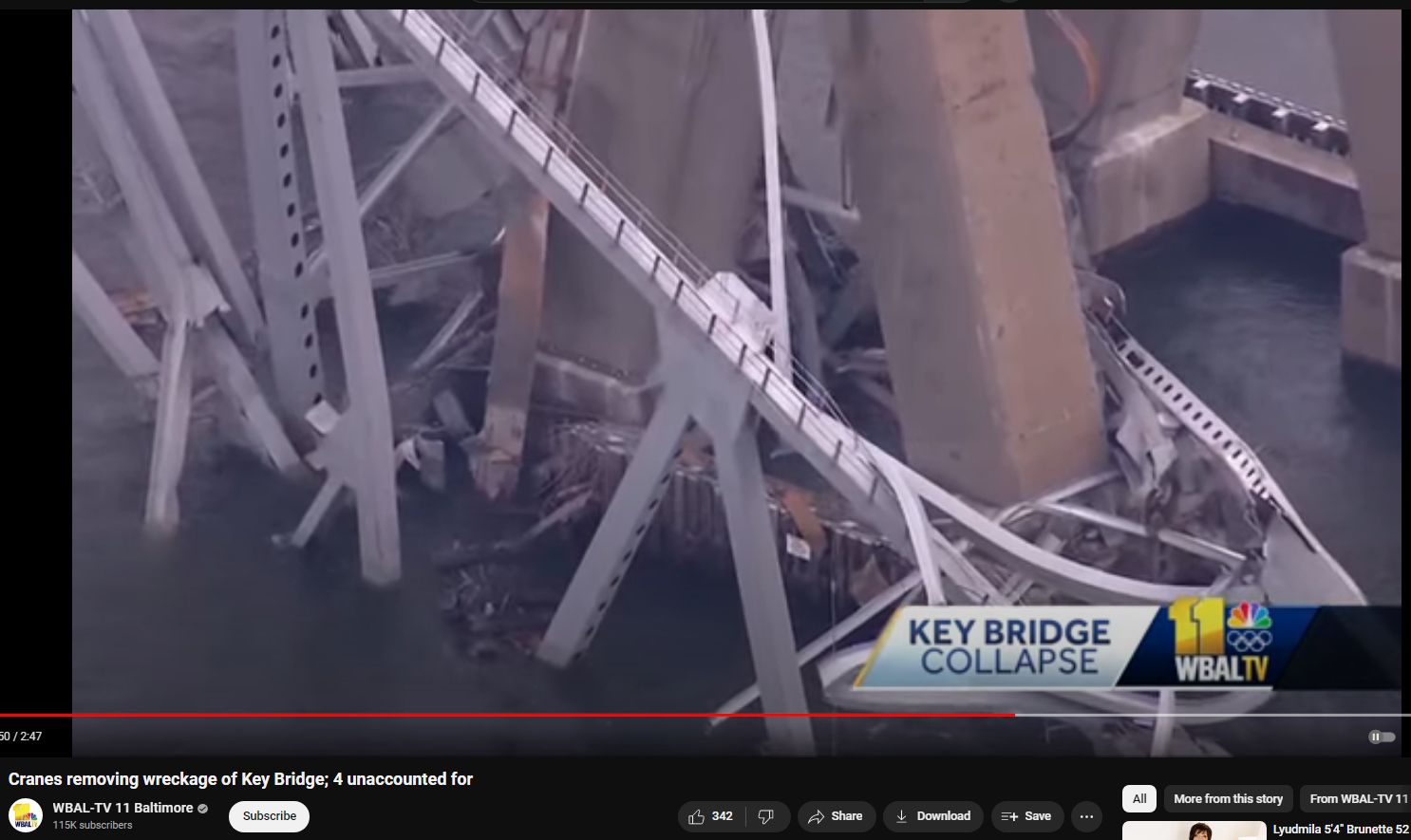
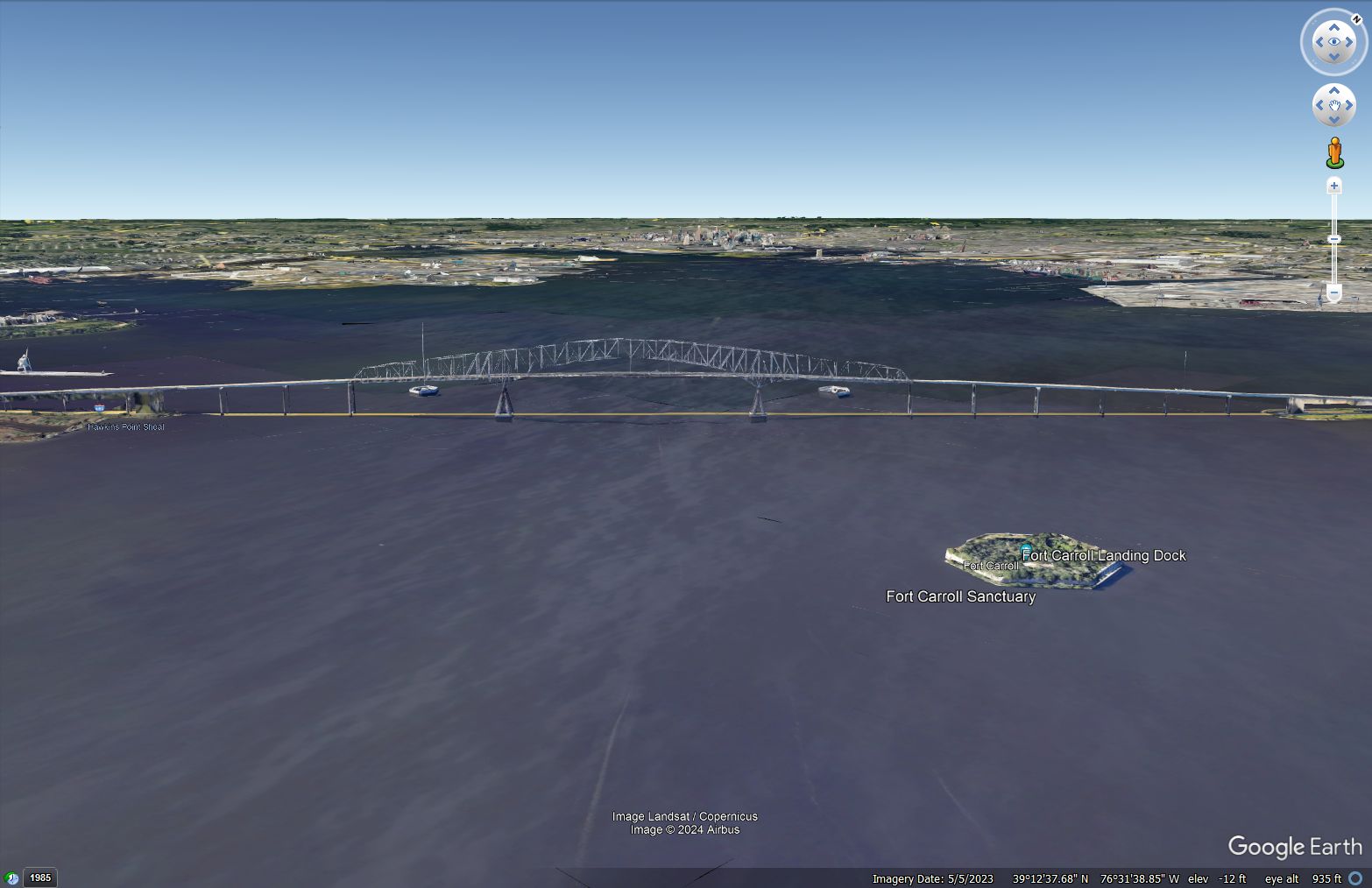
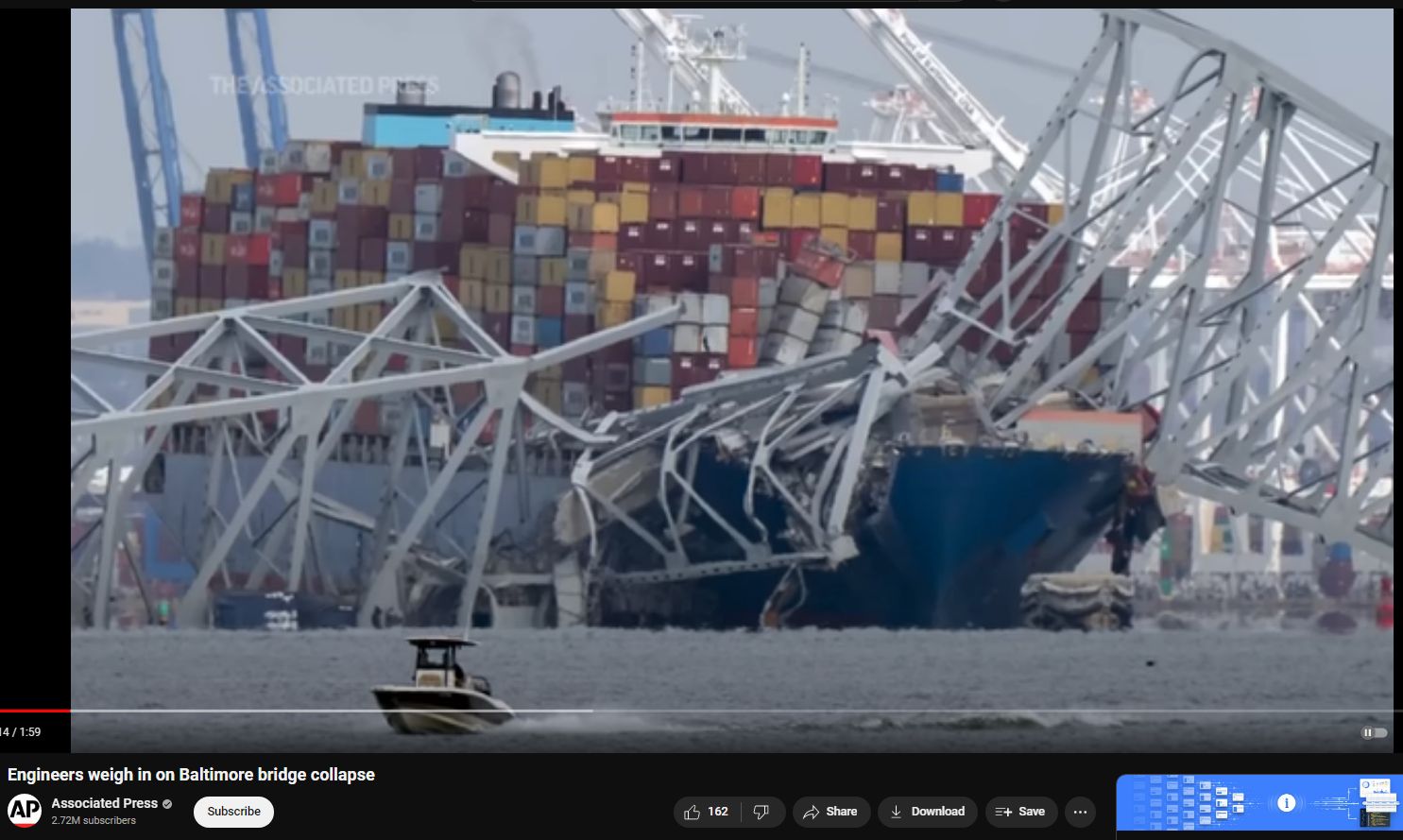
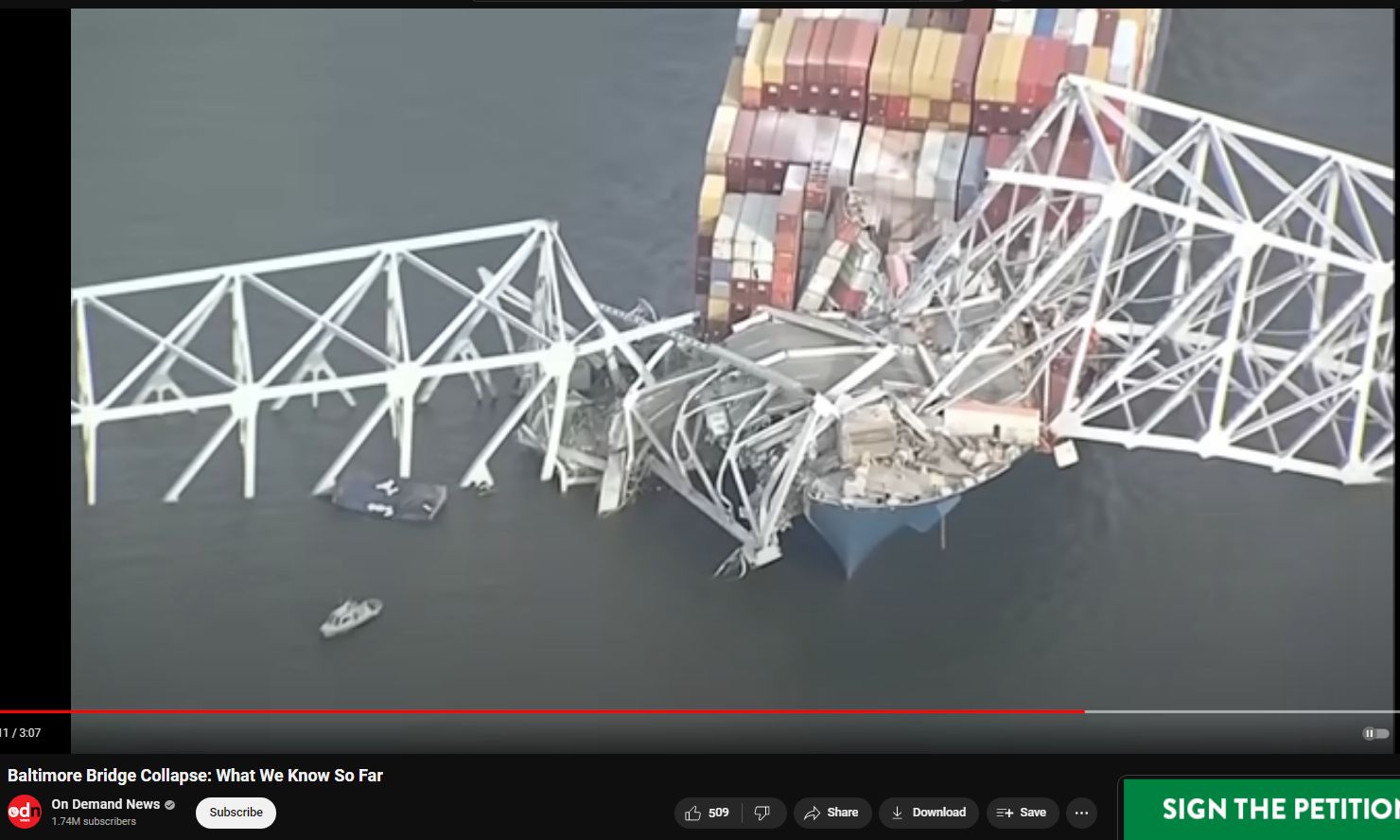
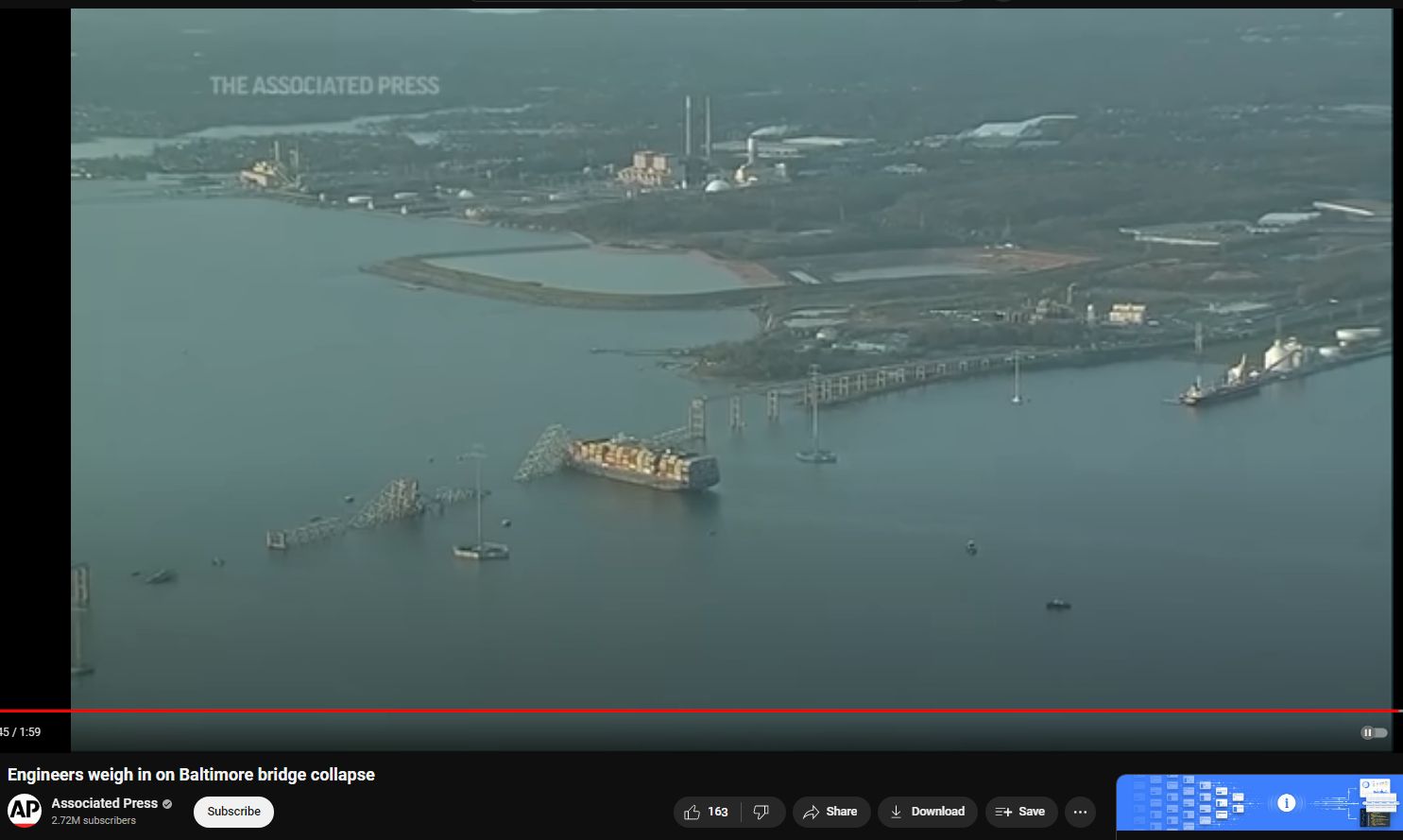
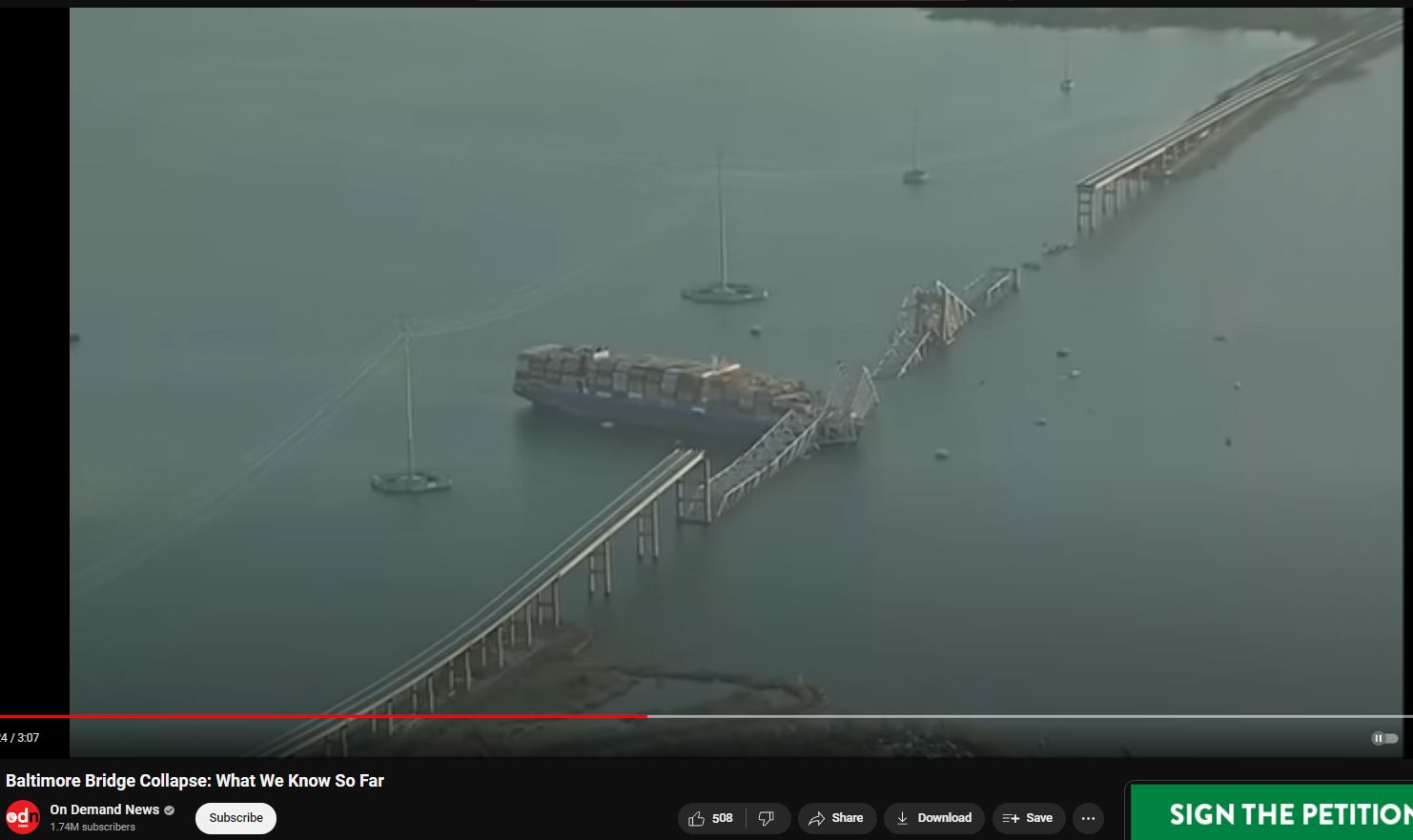
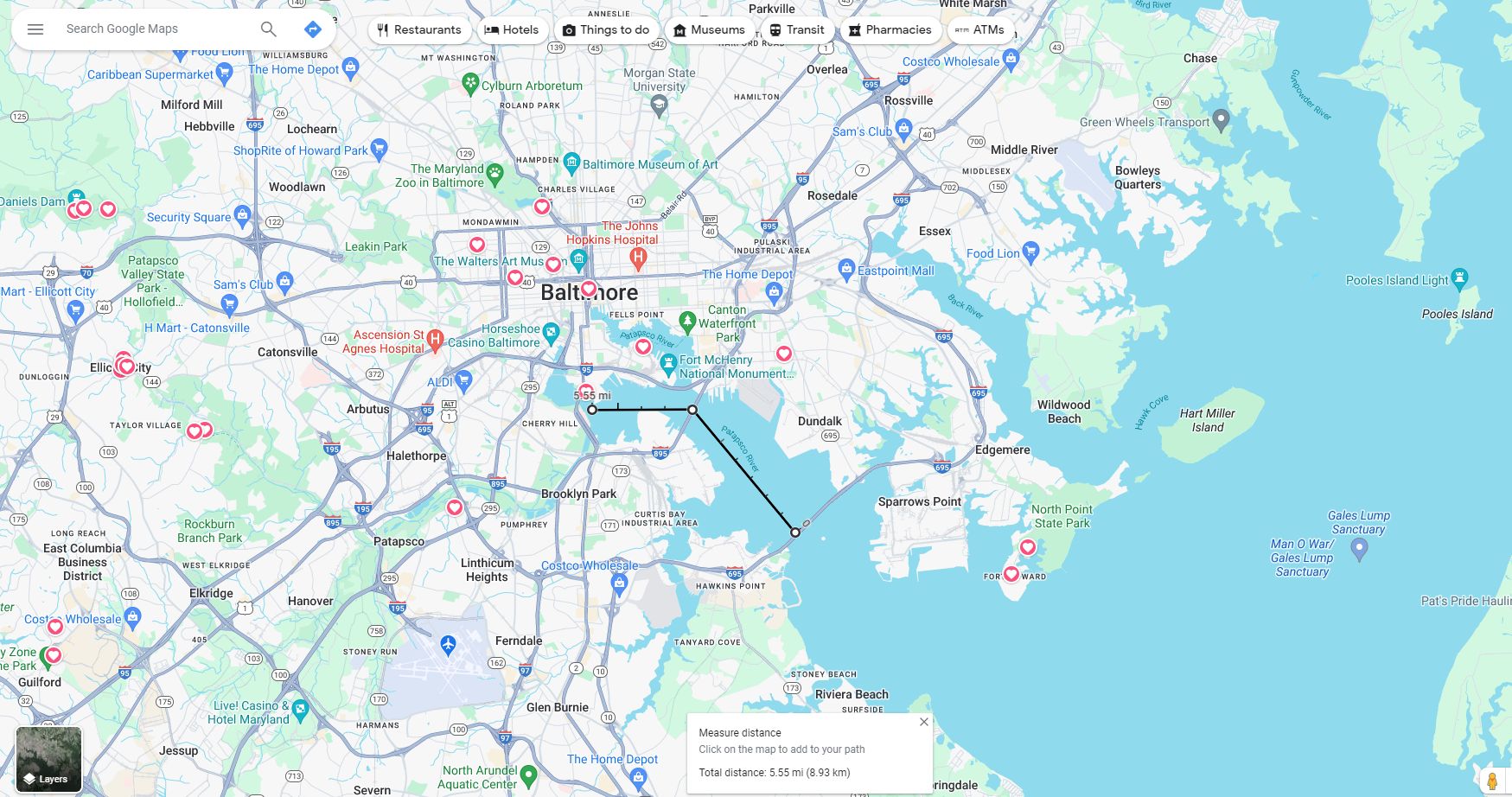
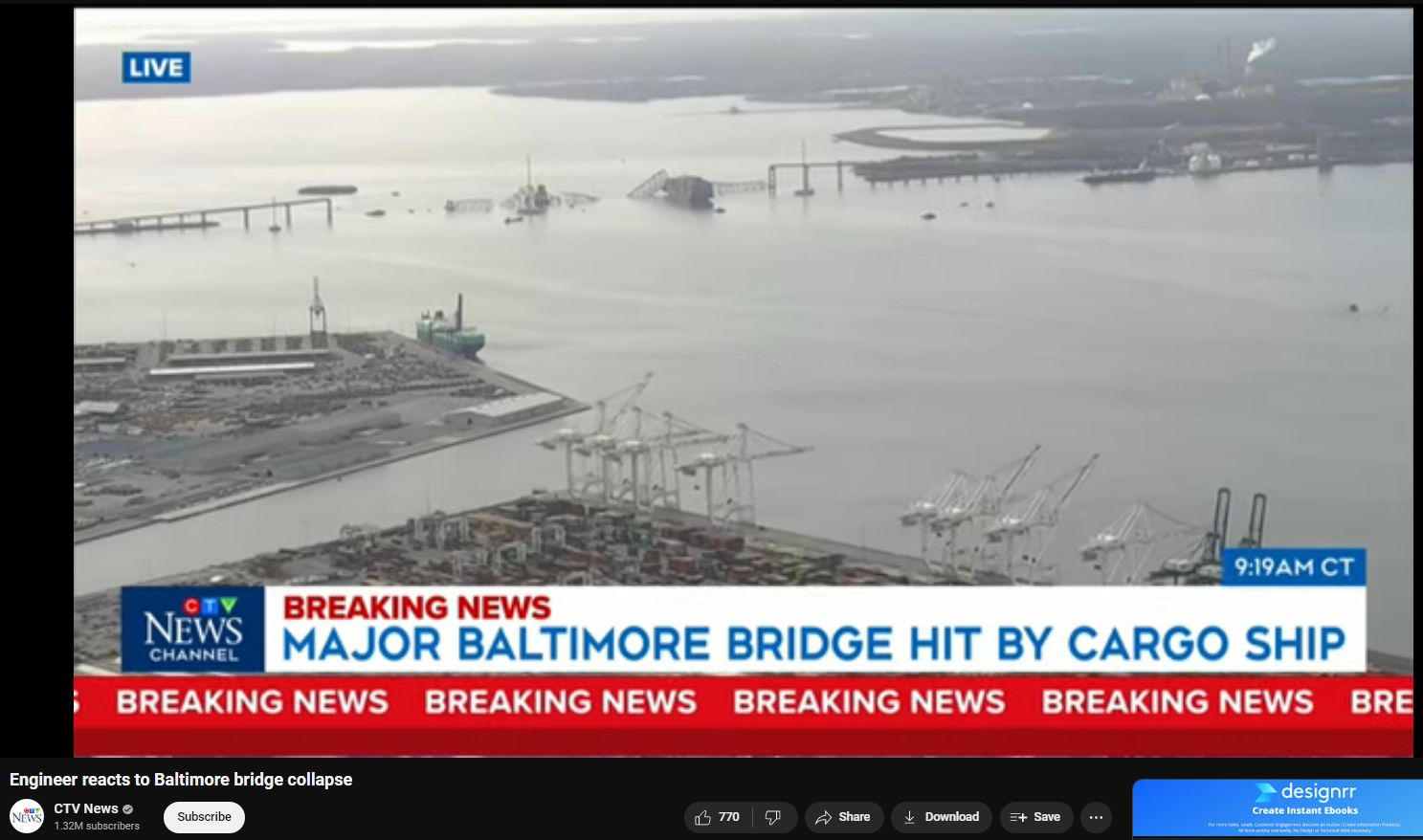
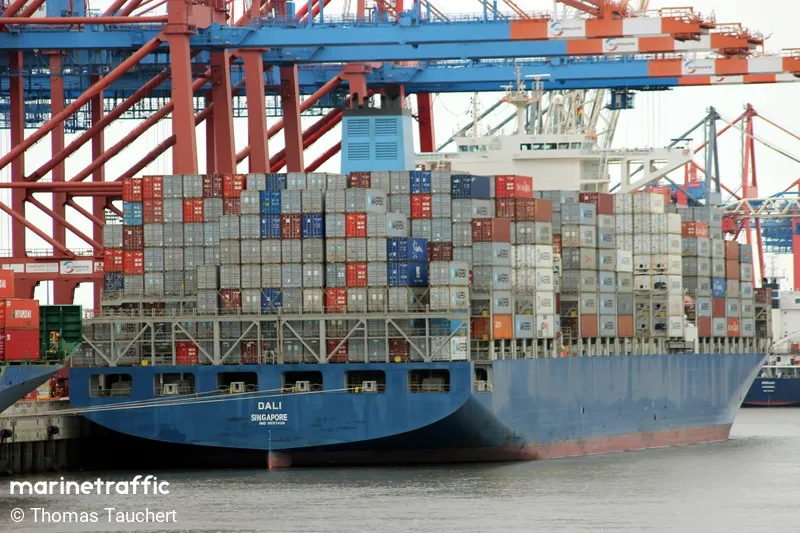
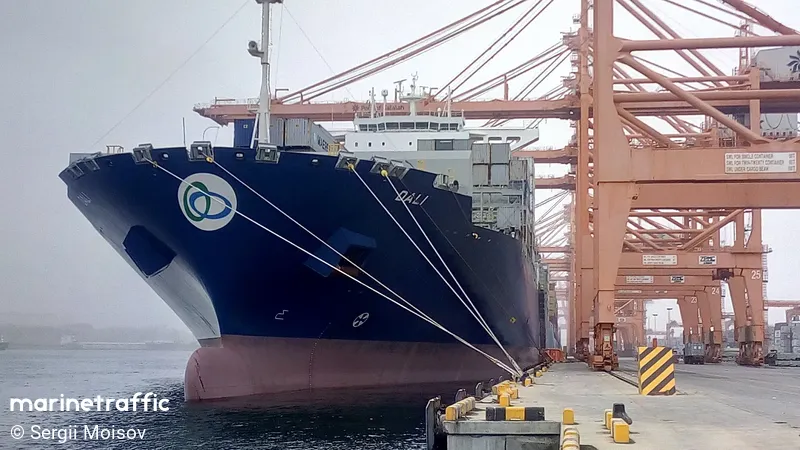
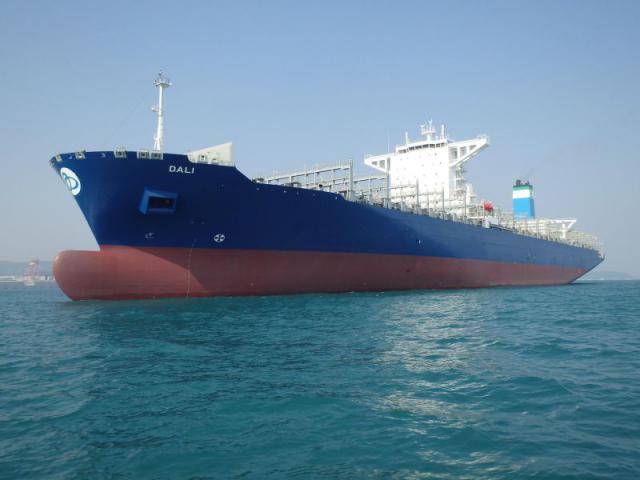
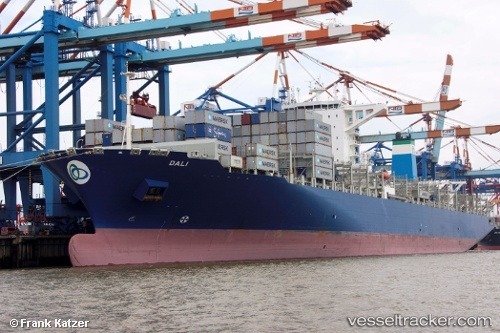
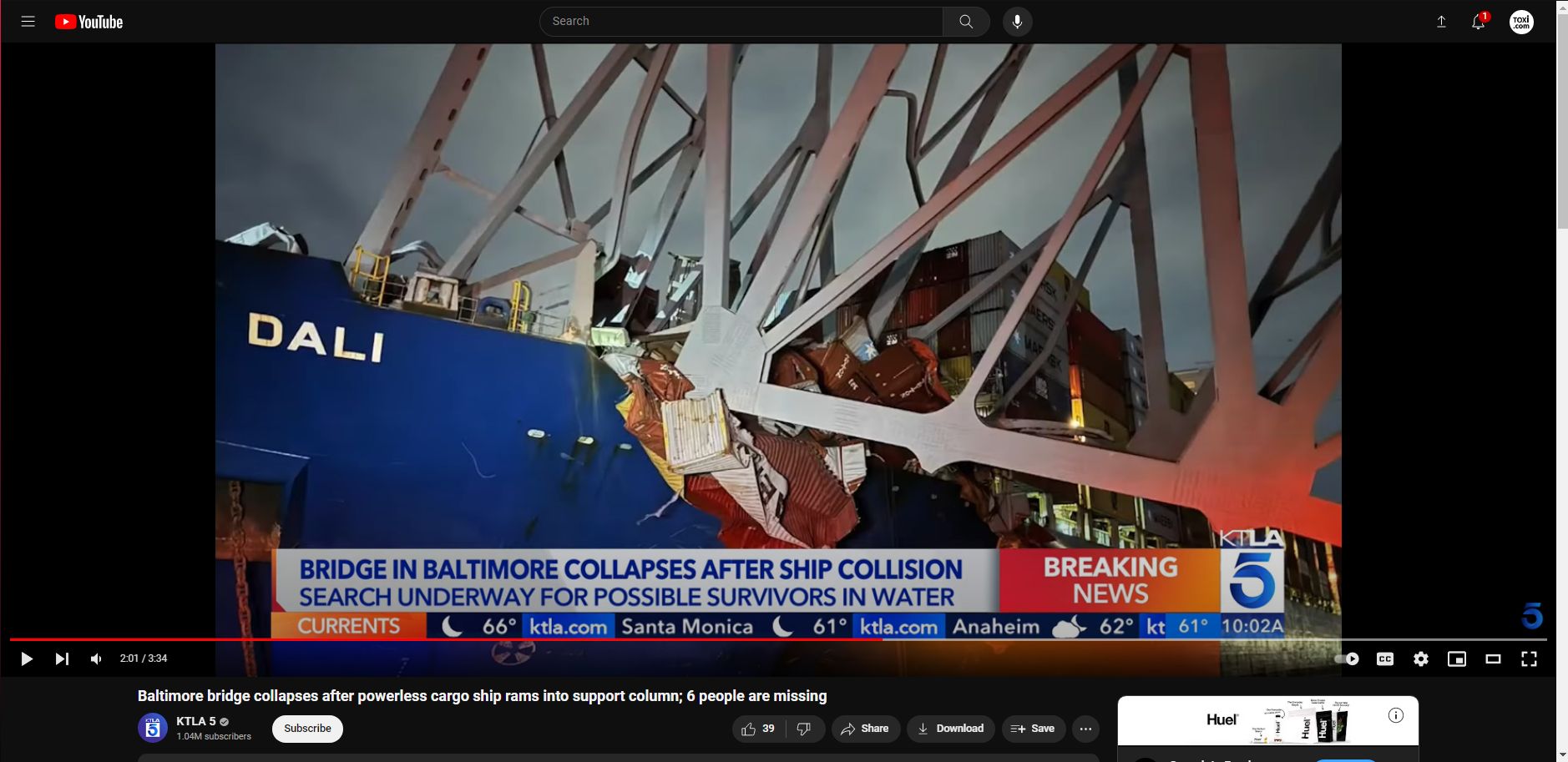
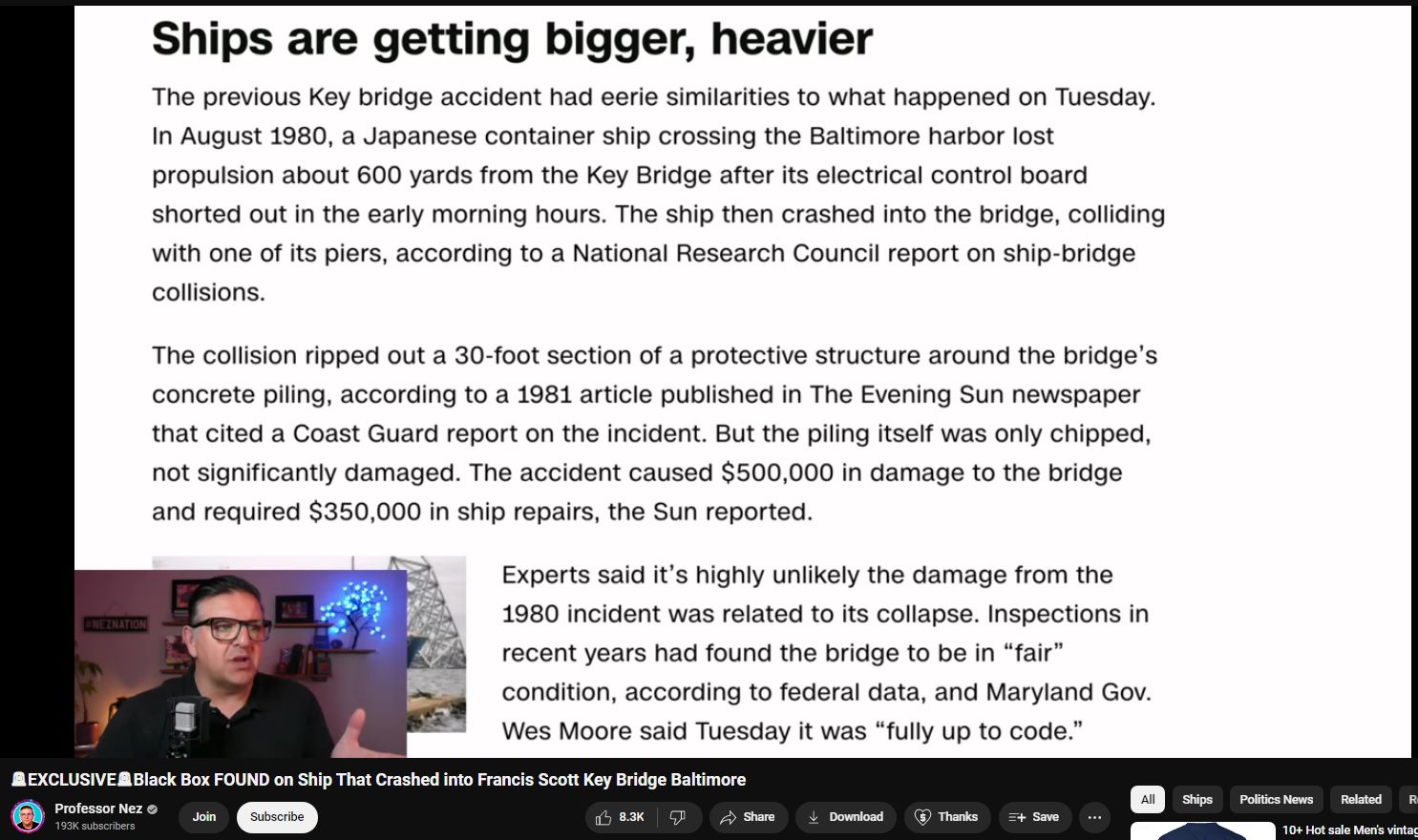
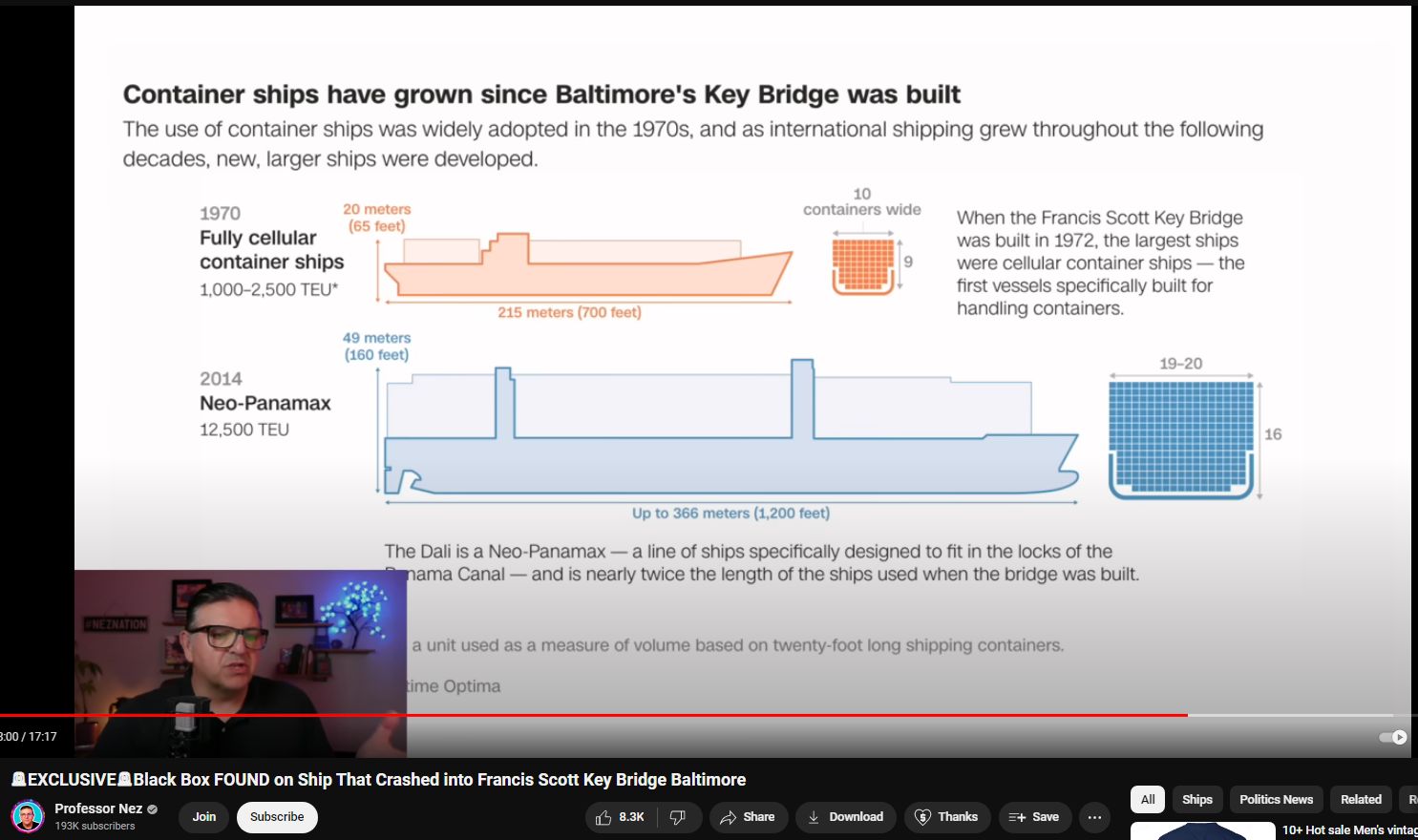
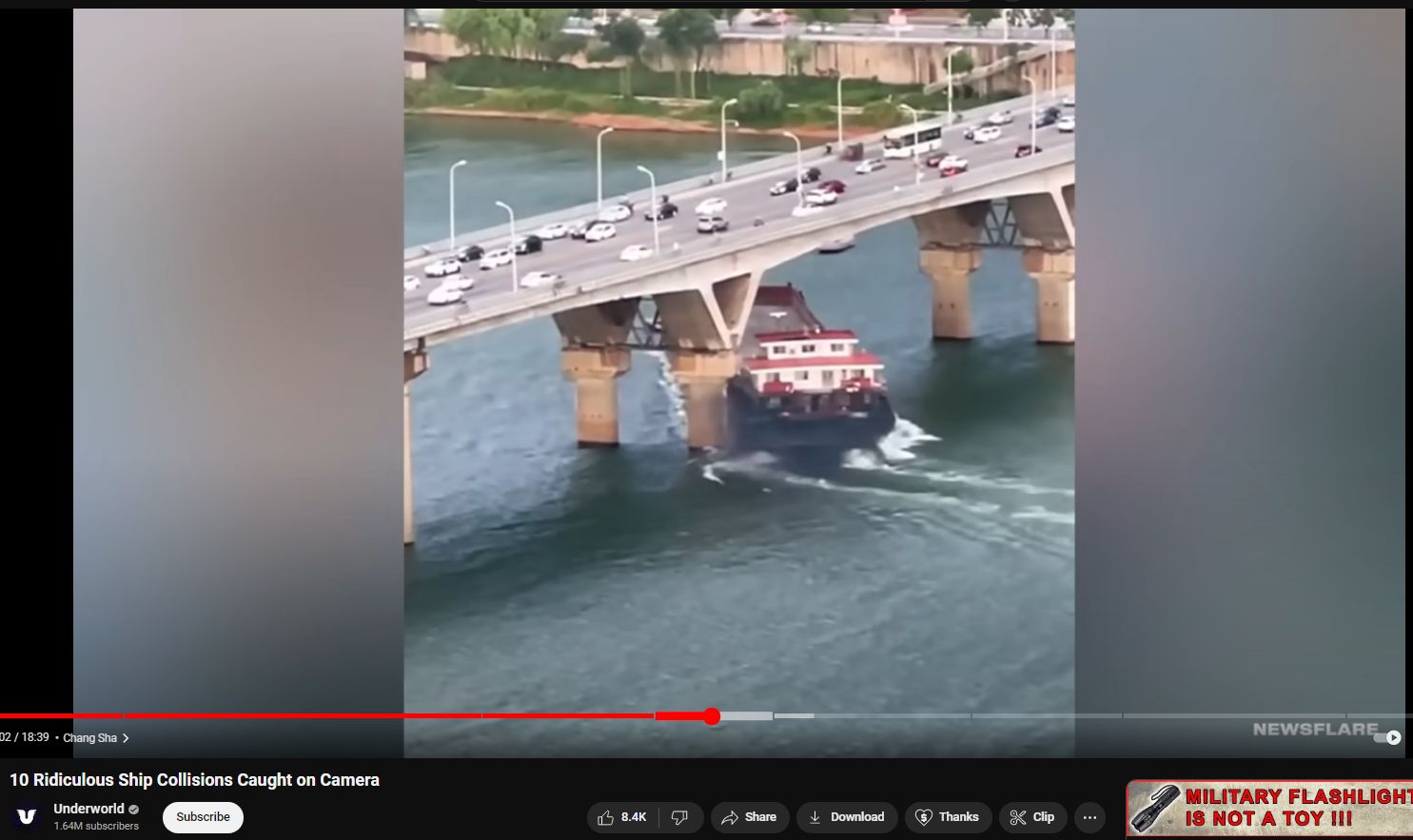
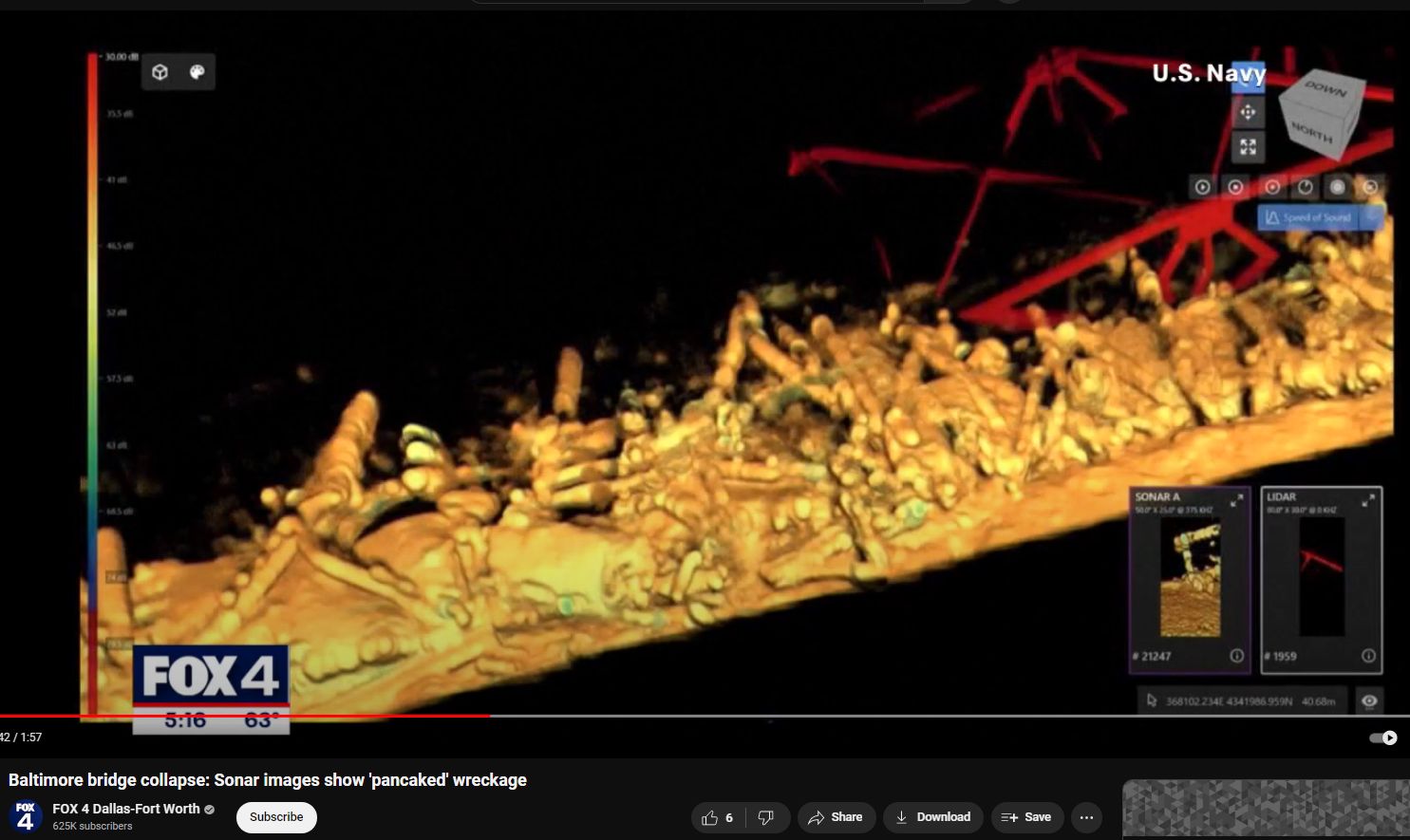
“So… Power goes out twice. Ship redirects to beeline into most vulnerable impact. Not a glancing blow; instead, the one-in-a-billion perfect dead-on redirect. If you wanted to intentionally handicap traffic, travel and trade, you could hardly have done a better job. Is pure accidental chance ever so perfect? (from another comment: “there ARE dolphins in place. Somehow this ship maneuvered in between them to hit the bridge”.)
“Meanwhile, in the past several years, thousands of food processing plants have mysteriously cremated down to white ash, just like homes in Lahaina(and Paradise California, and many other “wildfires” — per the forensic arborist Robert Brame on ‘chute-bit’), and the “cattle central” part of Texas near Amarillo. Baltimore is primary import port for farm equipment, so on continues the secret war on food, or maybe just continues another coincidunce…
“In 2003, the season 2 episode 1 of THE WIRE had a boat “with electrical problems” and “engines out” and also “in the shipping lane” stop near that exact same pillar. This echoes James Burke’s 1979 CONNECTIONS series episode 1 in which Flight 911 nearly takes out a NYC skyscraper (but, hey, “who could have imagined?!?”) Now that could alllll be just coincidunce, but it sure seems like more THE-SIMPSONS-esque predictive programming and a concerted assault on food production; here, was this possibly an attack on Maryland and USA economics, cutting the USA in-half right near the Mason-Dixon line, like at another intense time in our history? (Maryland and Virginia … Virgin Mary …)
“[47-years age of the bridge is 17k days, or 411,720 hours. At one-ship-per-hour traffic density (therefore one collision-chance per hour), there’s better chance of winning the mega-millions lottery than hitting that bridge pillar with such guided-missile-perfection ‘by accident’.]
“RE the melted / bent steel girders — The melted / bent steel is highly suspicious; we’ve seen something similar before in NYC twenty years ago or so. All those wet noodle impossible molten bendings, never a crack, never a chipped-off patch of paint — look at the many videos of it. Also, the weird flames and fires appearing in the smoke at the locations of greatest bent-steel (the northern pillar looks as though long strips of metal are melted and draped over the top of it …?). Maybe related? Maybe another kind of energy was applied to melt the steel. We know those kinds of things exist, detailed in the “org” site called “deps” and another called “dsiac”. What if this is just another part of some anti-American attack agenda? Youtuber ERIC777 sourced research reveals that an old, formidable, particularly religious group controls Raytheon ( ?v=uxlXK3T6R1M ), and Raytheon makes those kinds of exotic weapons that can melt steel. That same particularly religious group was literally created to “counter” the Protestant Reformation (and “extirpate” other so-called “heretics”); USA is an highly Protestant country. Religion has long been identified as deeply involved in nearly all wars (and don’t wars involve infrastructure attacks? In fact, are we not involved in conflict right now that also involves the ‘taking out’ of bridges?); ignore these implications at obtuse peril.
“As Americans (and as sympathizing humans with skin in this life game), we should all help sanely connect verifiable dots, not scoff-off the ever-increasing coincidunces. Per the comments elsewhere: “some day, you too will wake up to what’s really going on” and that wake-up will likely be personally painful.” https://www.youtube.com/watch?v=grjK6sqQyDA
—